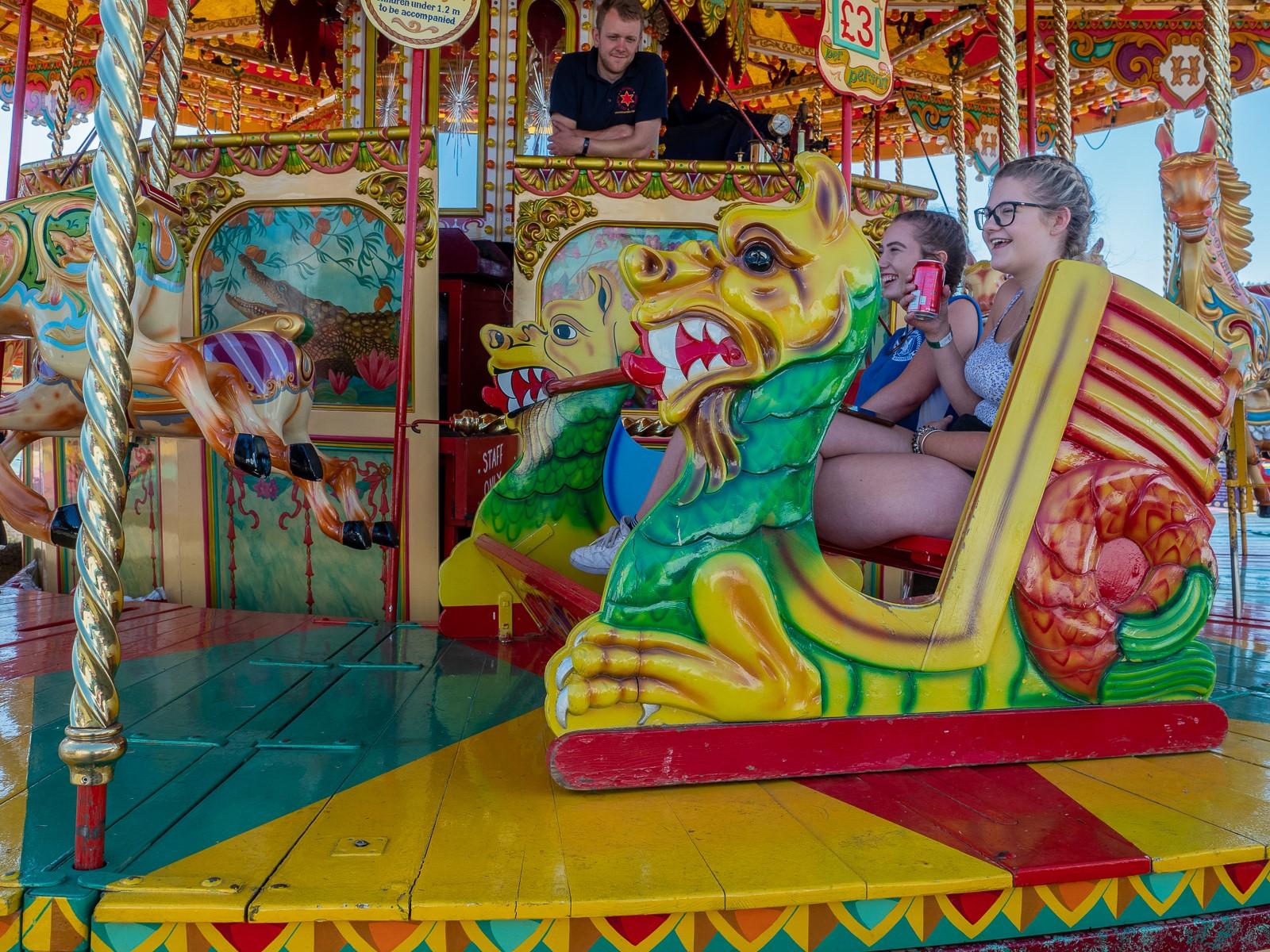Contemporary North Members Showcase


























Members’ Showcase is the first edition of a new publication providing a platform for contributors to our monthly meetings to display the work they have shared.
Contributors have curated their own images and provided the accompanying text making this a real group venture.
Cover image by Wendy North Designed and compiled by Lyn Newton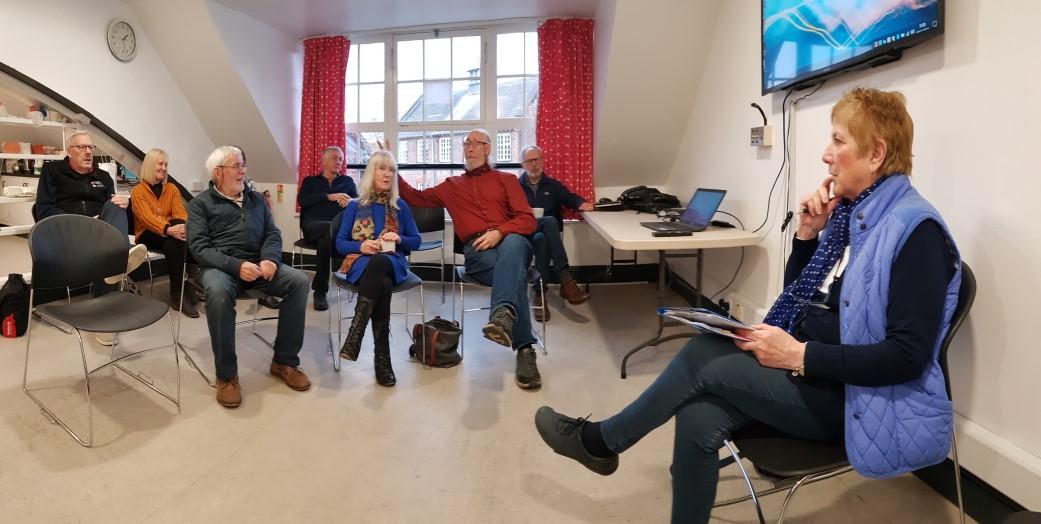
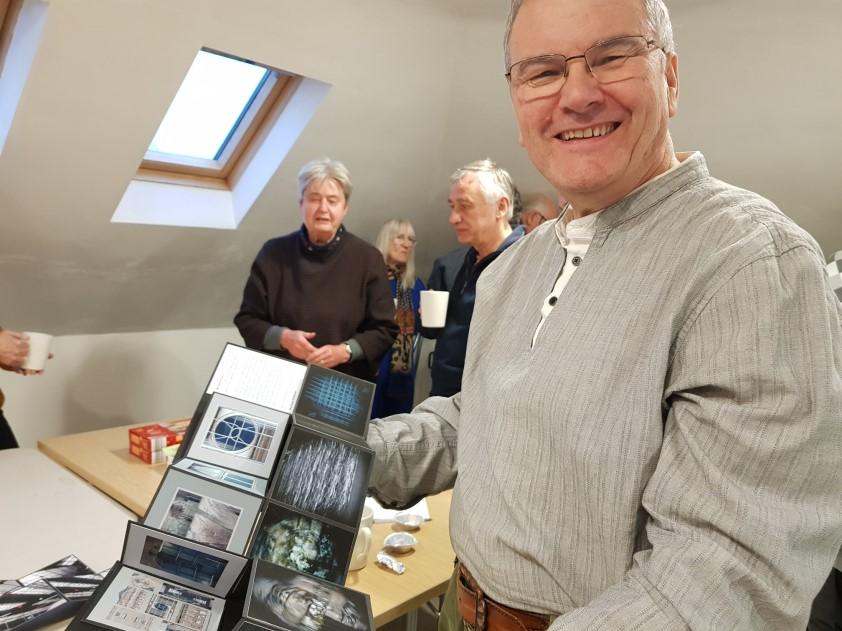
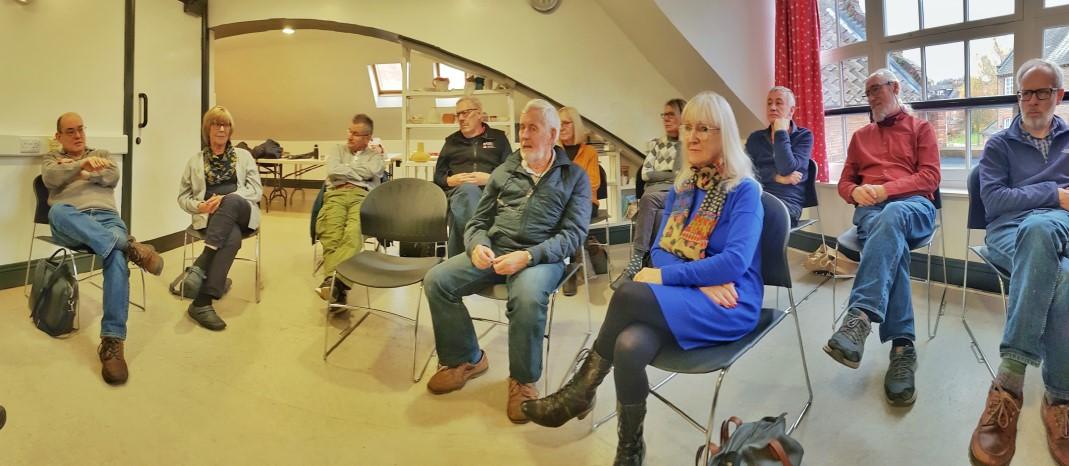 Chaired by Patricia Ruddle
Contributors: The first four members to show their work had taken part in a Glasgow based workshop in June and they shared work from this trip.
Morris Gregory
Lyn Newton
Wendy North Harry Silcock
Jim Souper
Gary Morgan
Andrew Hersom
Images and content of this publication are the copyright of the photographer unless stated otherwise
Chaired by Patricia Ruddle
Contributors: The first four members to show their work had taken part in a Glasgow based workshop in June and they shared work from this trip.
Morris Gregory
Lyn Newton
Wendy North Harry Silcock
Jim Souper
Gary Morgan
Andrew Hersom
Images and content of this publication are the copyright of the photographer unless stated otherwise
Five days in Glasgow would only be sufficient to scratch the surface of what this city has to offer photographically. Fortunately, our workshop leader, Iain McGowan FRPS, had previously scouted several locations for us to visit and to create our own personal interpretations. An added bonus was the Glasgow Pride march that took place on one day of our visit. Photographing the characters on the march was a joy as it was a celebratory occasion and taking pictures did not seem at all intrusive. However, there was also a small religious group whose views did not coincide with those on the march and that created a tension that I also wanted to capture.
Apart from street photography it was interesting to explore other aspects of Glasgow including the wall art, markets, cemetery and architecture. The latter, in particular, I found lent itself to techniques such as multiple exposures to create abstract interpretations.
It was very rewarding to immerse myself in various styles of photography, adapting to the demands of each, from the immediacy of social documentary on the streets to the more deliberate and considered approach required for creating the architectural abstracts.
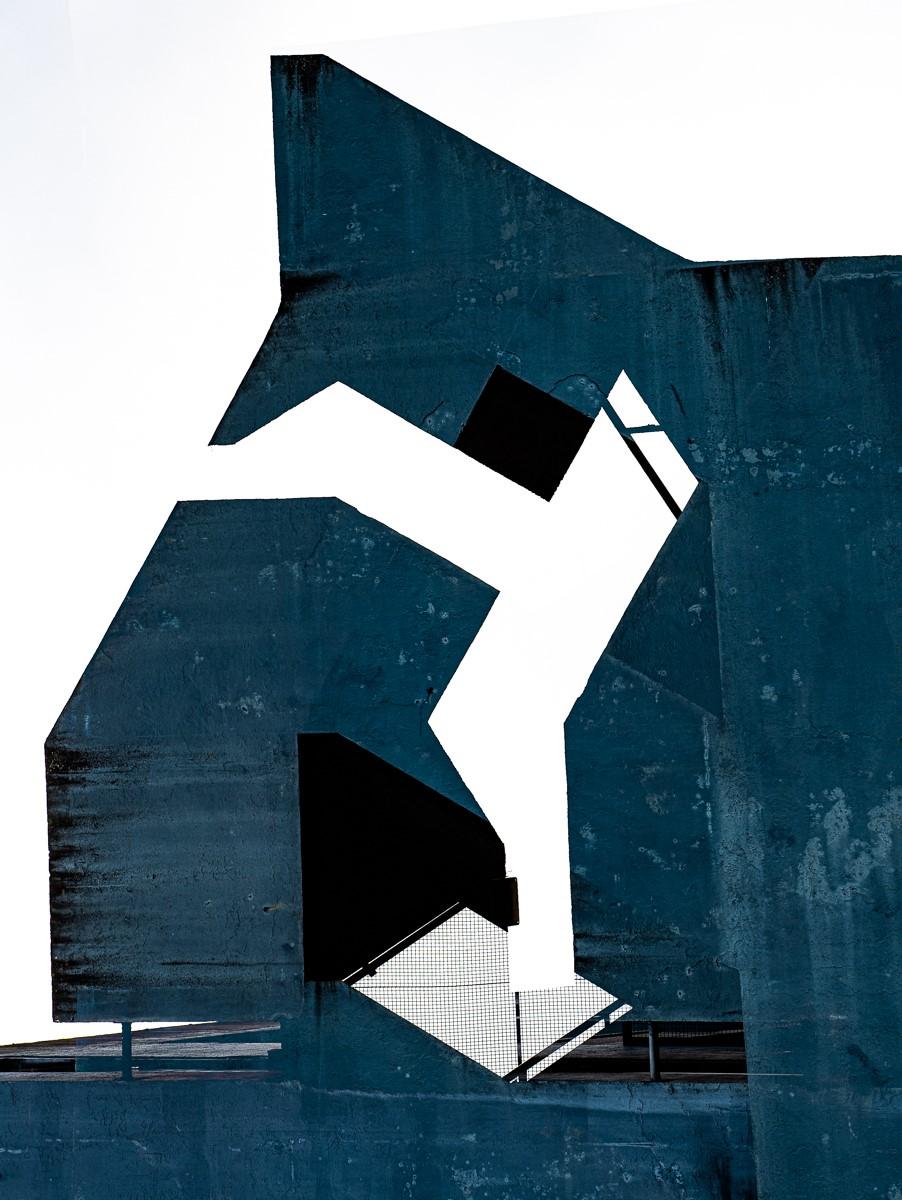
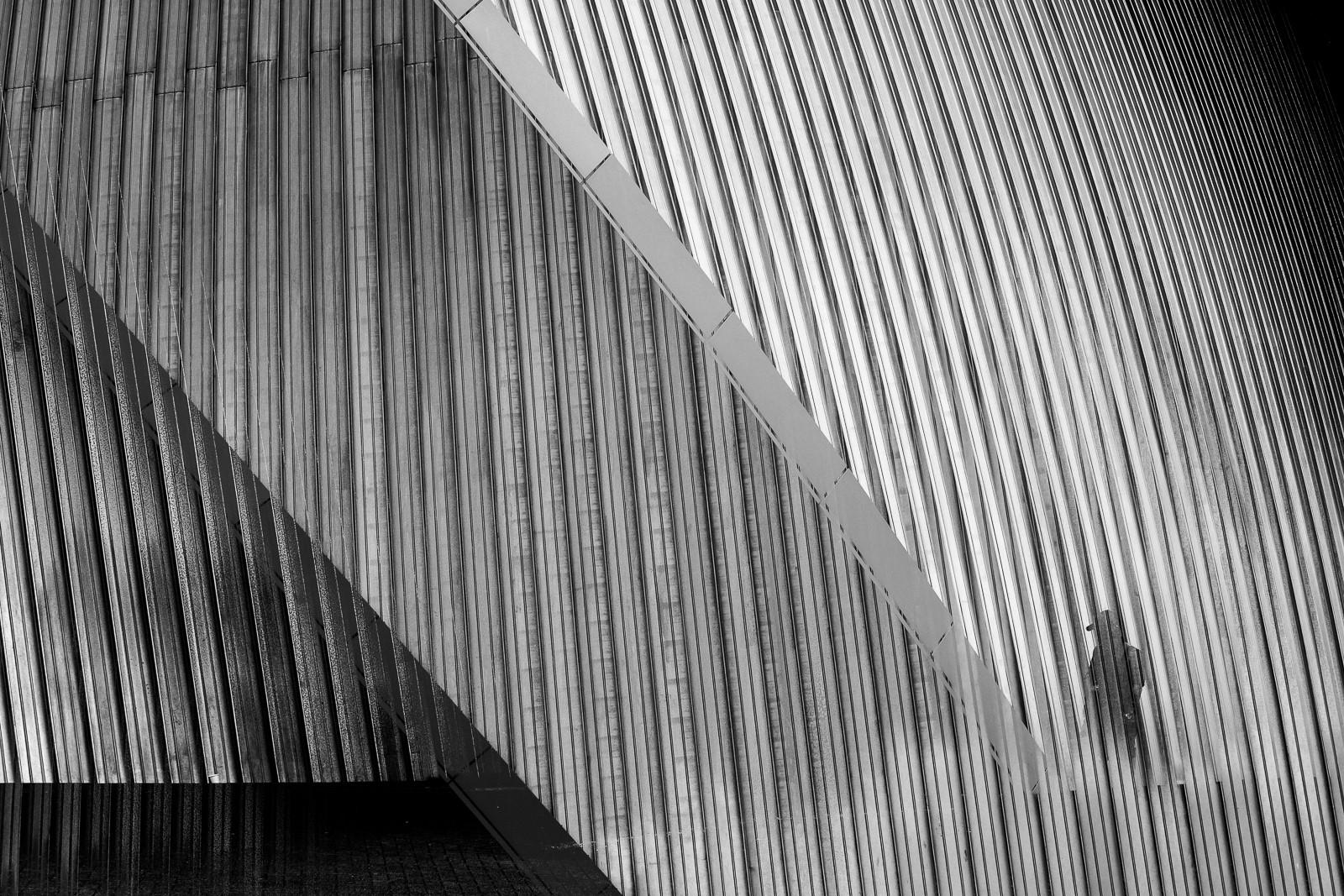
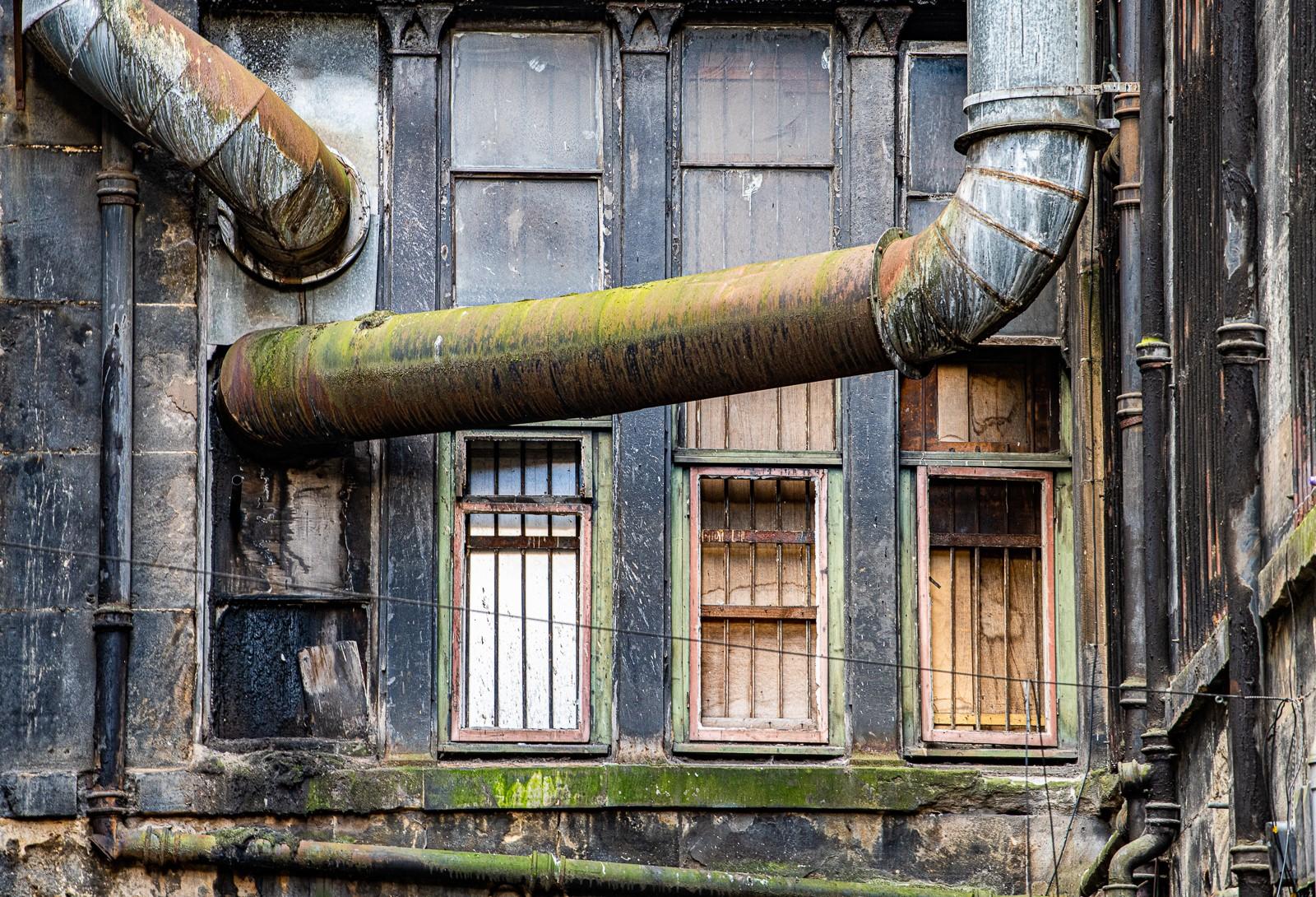
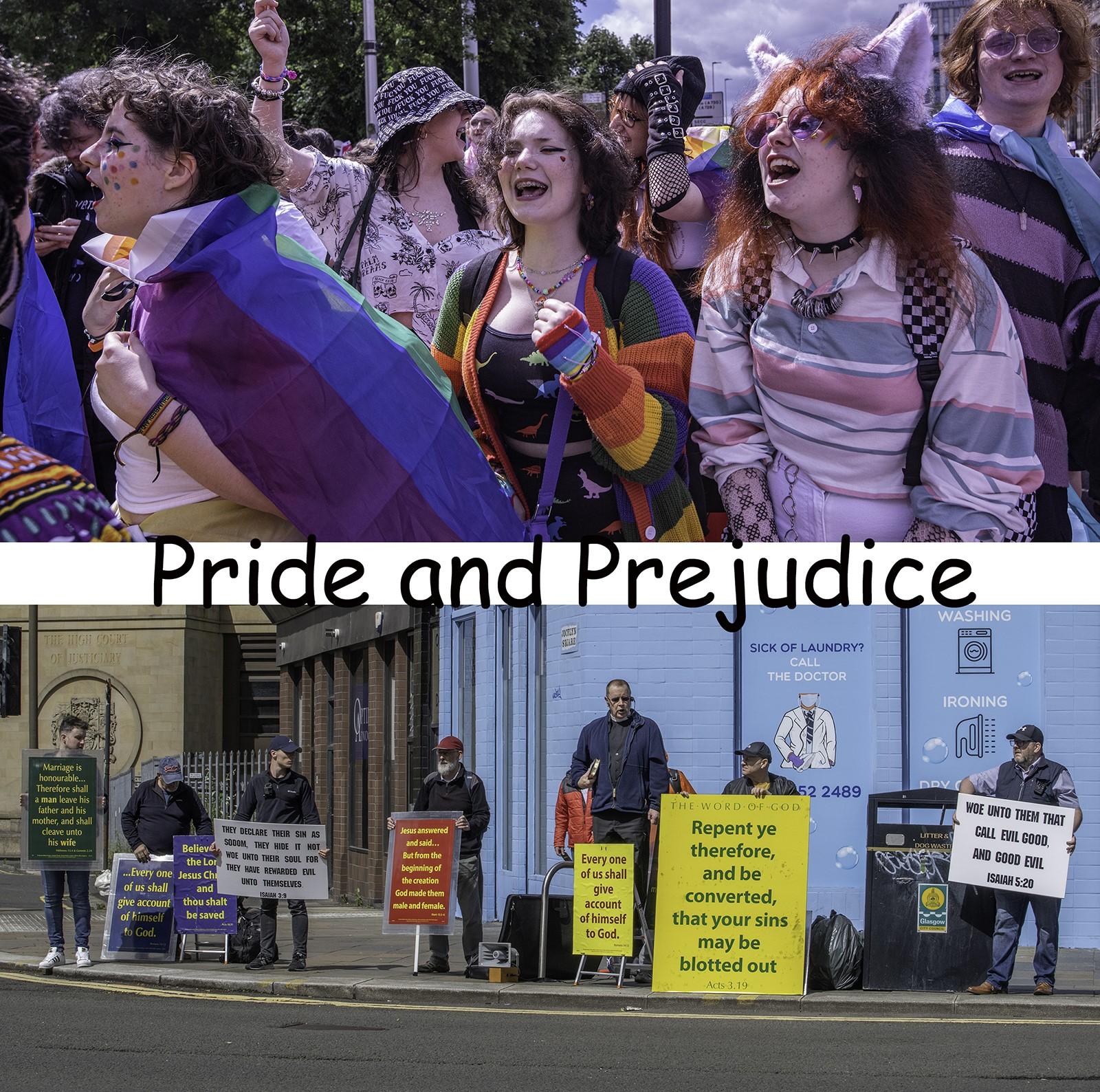
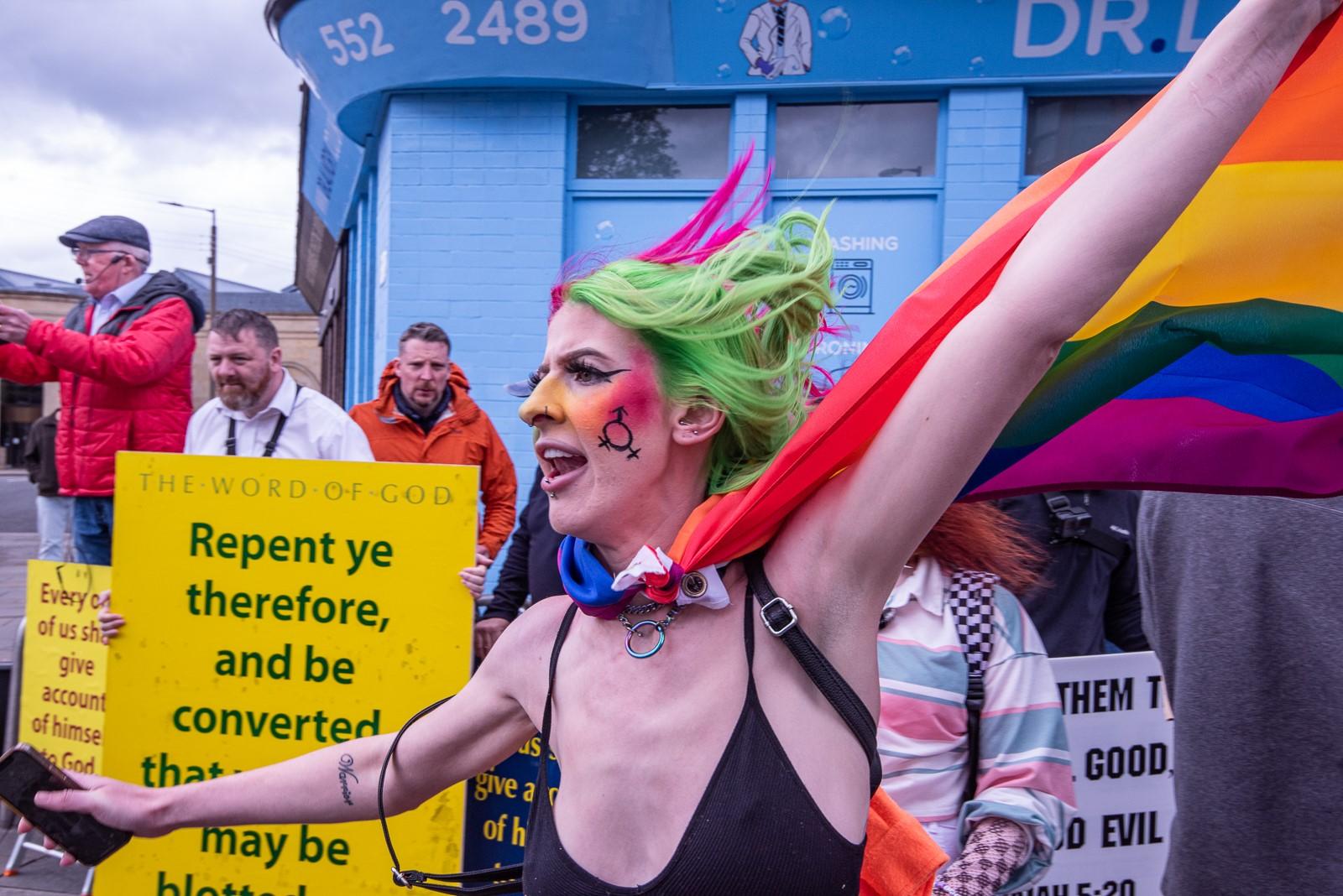
As a first timer to Glasgow, I found it a really intriguing place of many parts and one with real character. In a new place, I look first at the architecture, the streets and the people because these key characteristics set the scene and very much determine the feel of the place. In the words of Bruce Gilden ‘photographing in a new space is always welcome because you don’t know what you’re going to find there.’.

The wall art in Glasgow is a real feature and adds a vibrancy and character to otherwise nondescript buildings. The city is noted for the huge murals which adorn many of the buildings and there is a designated city centre mural trail.
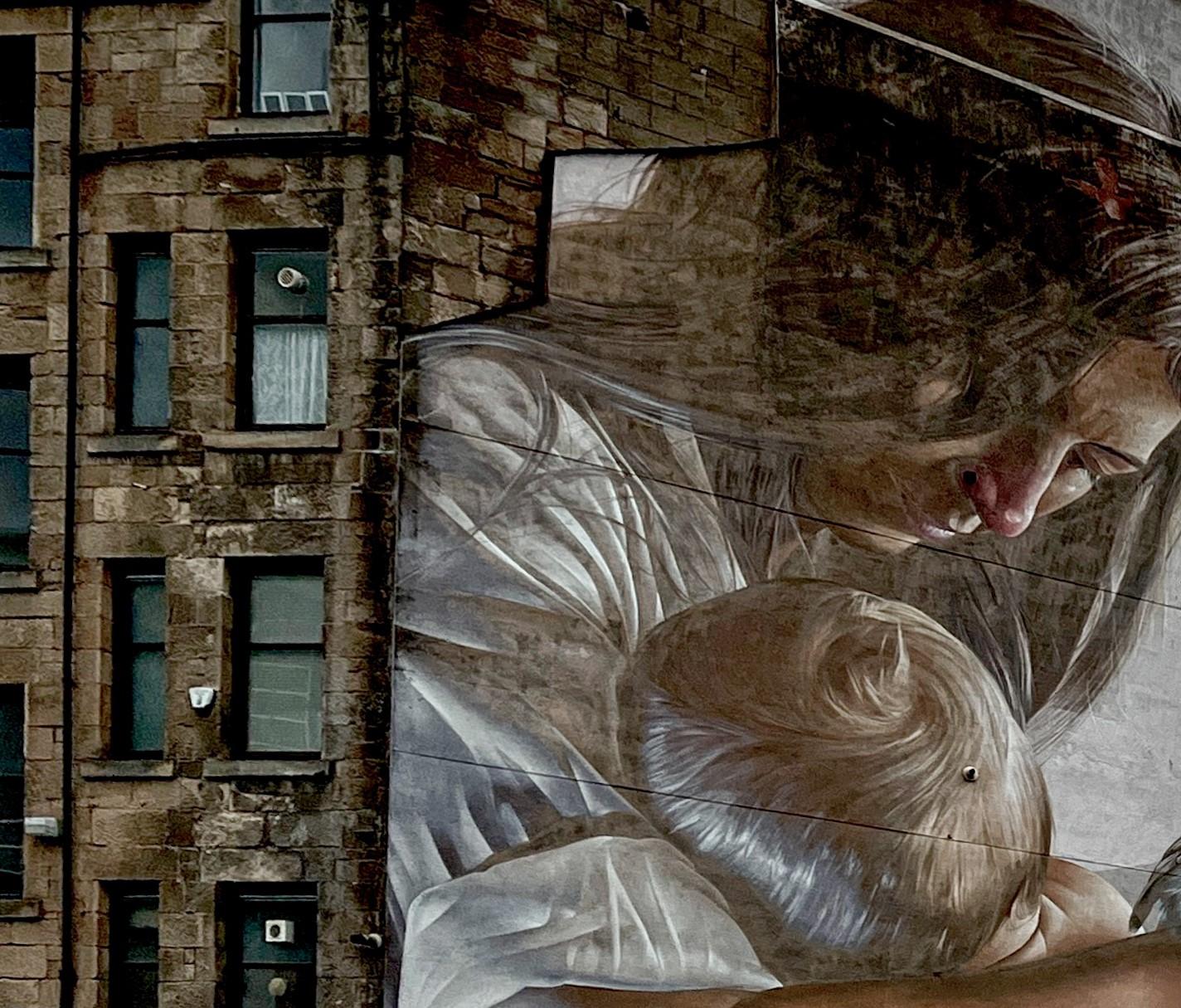
I was particularly attracted to the way in which the artists had blended their art work with the colour of the underlying buildings making a really harmonised, meant to be there, kind of feeling.

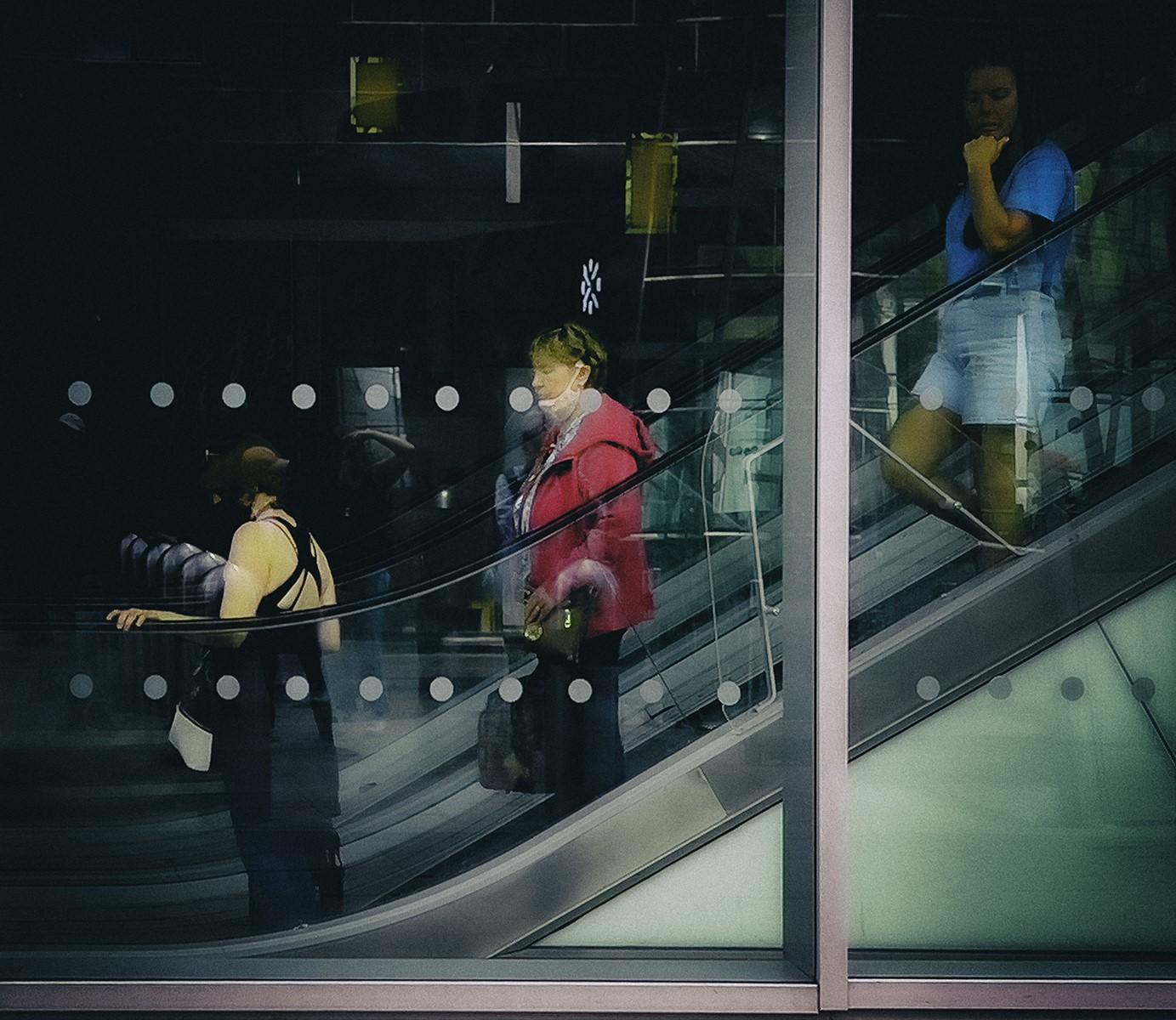
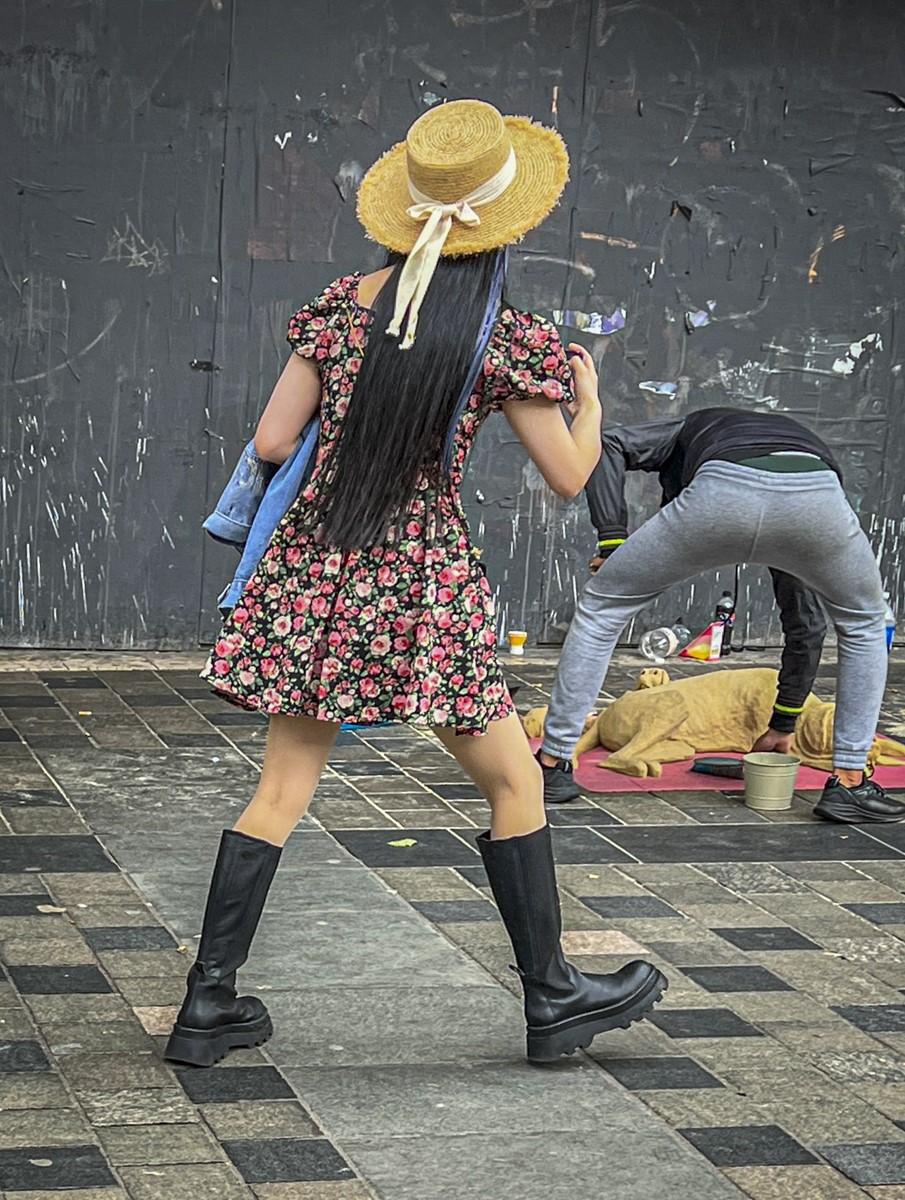

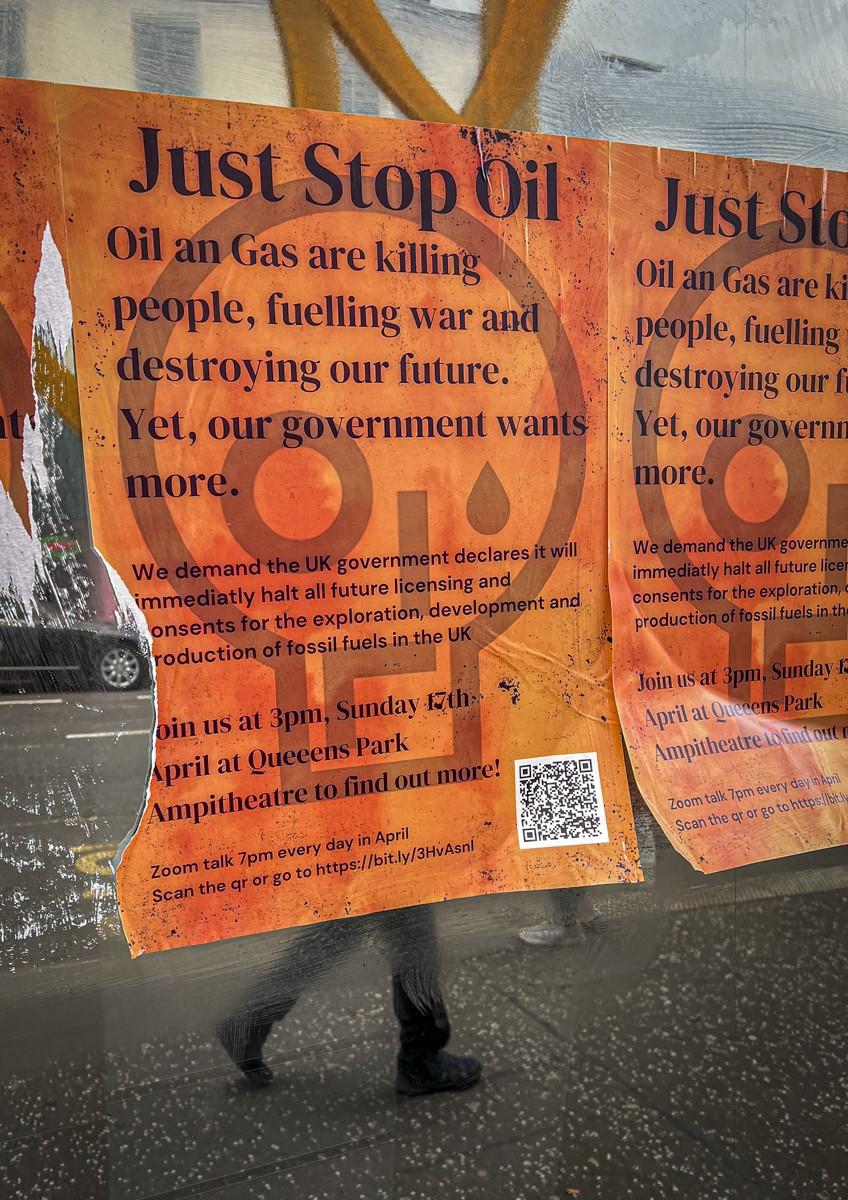


People make Glasgow is the City’s brand name .
The one and only Barrass (pronounced Barra) Market - an absolute must for any photographer - crammed full of the most eclectic and unusual curios.
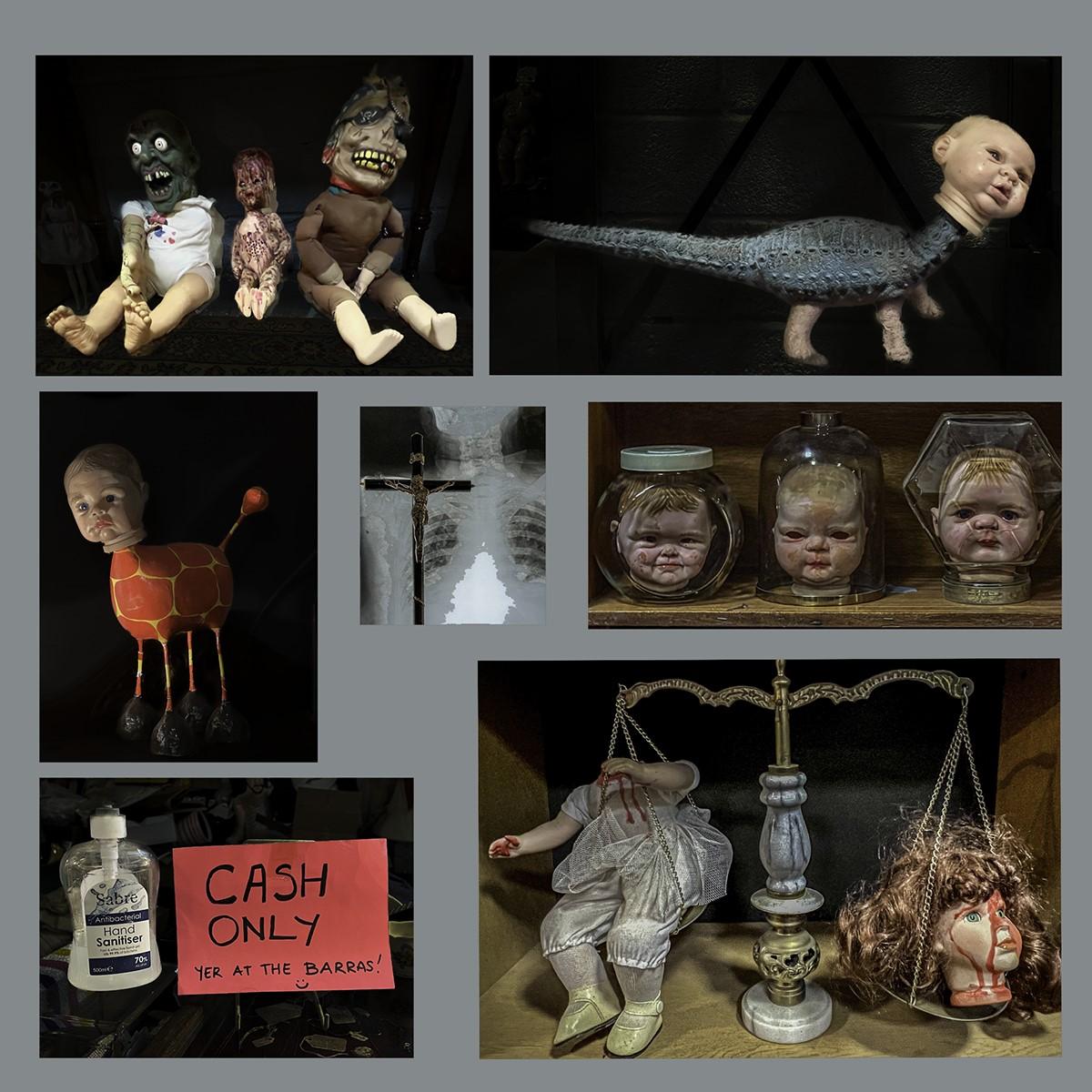
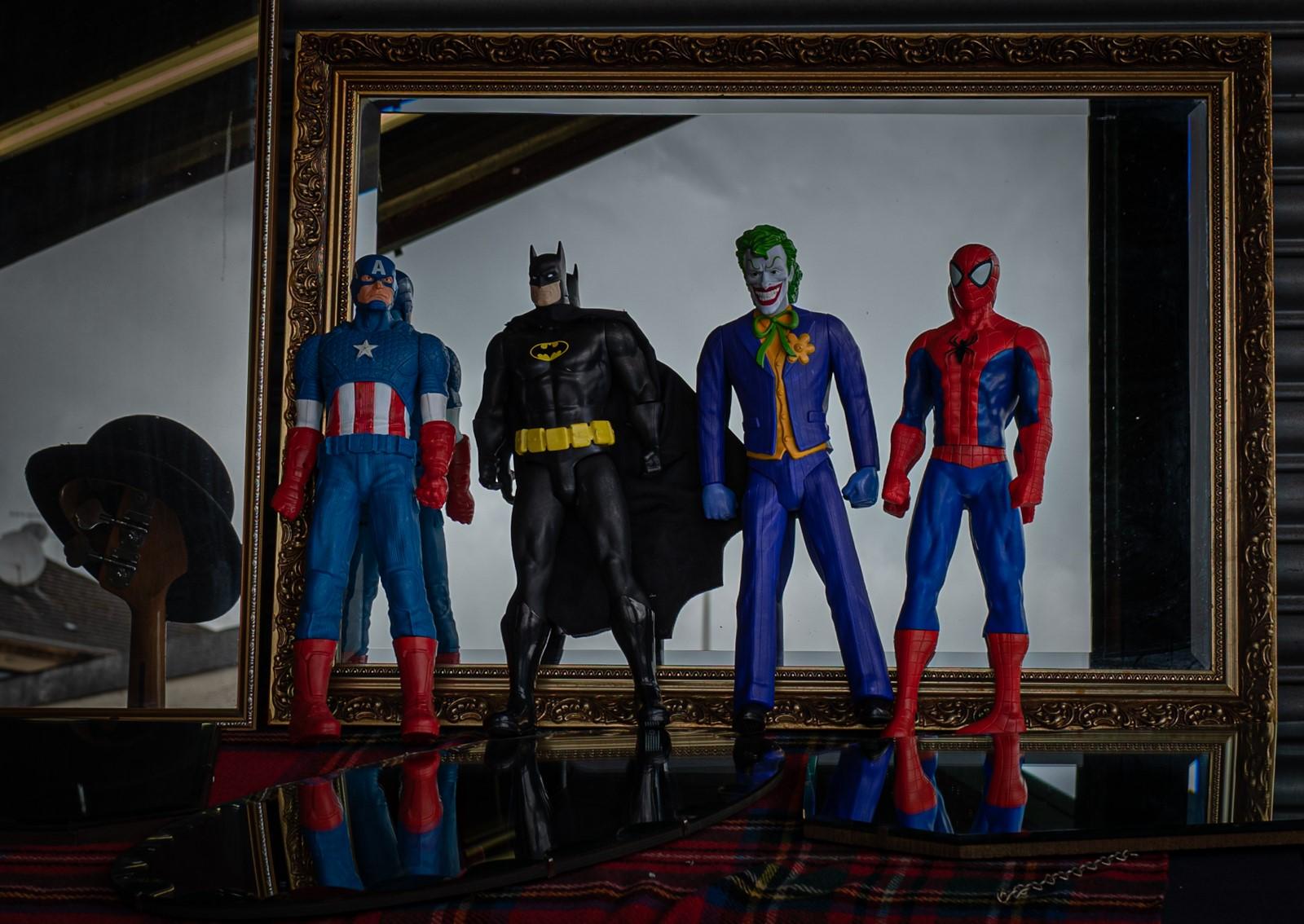
Glasgow is definitely on my revisit list.
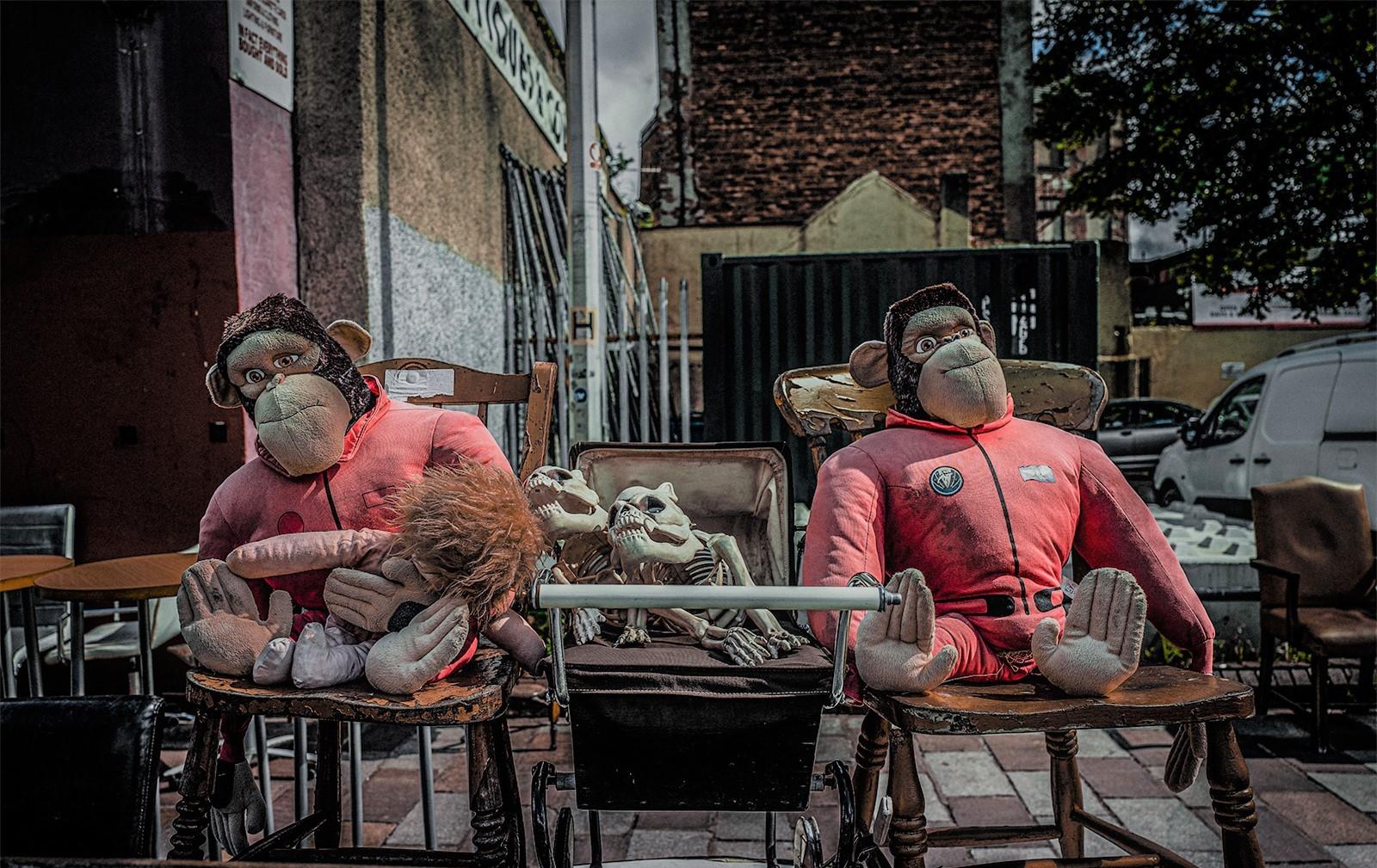
I think it’s always difficult when you go somewhere new to think of anything other than one-off images unless you have some kind of plan in mind. On our first morning in the city Iain walked us around the main shopping area and I simply used my camera as I might a sketch book, to record the sites and scenes as they unveiled themselves. This is a way of working that many photographers adopt, David du Chemin and Joe Cornish come to mind.
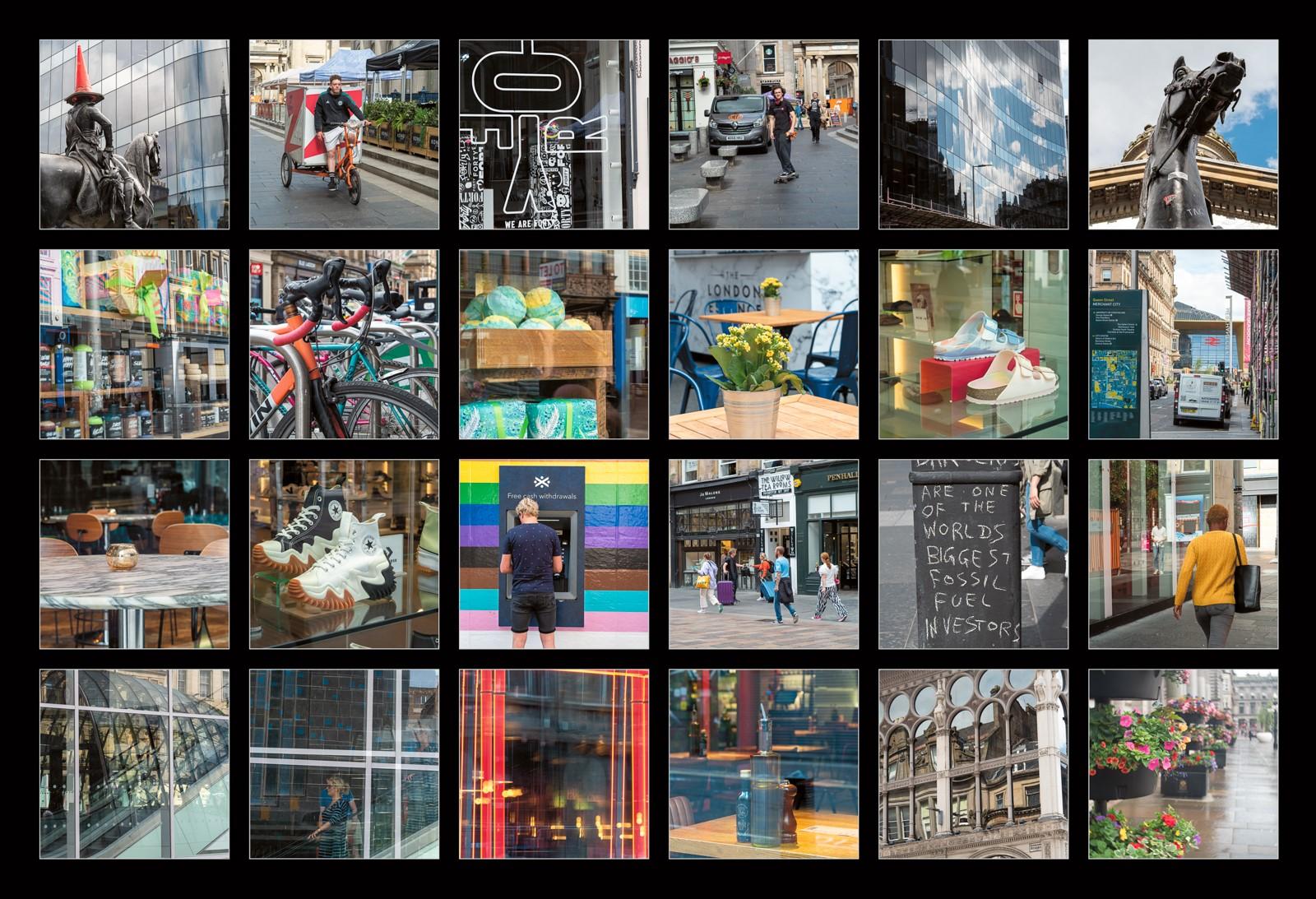
Because I’m limited for space I’d like to share with you a few selected highlights from the five days we spent there.
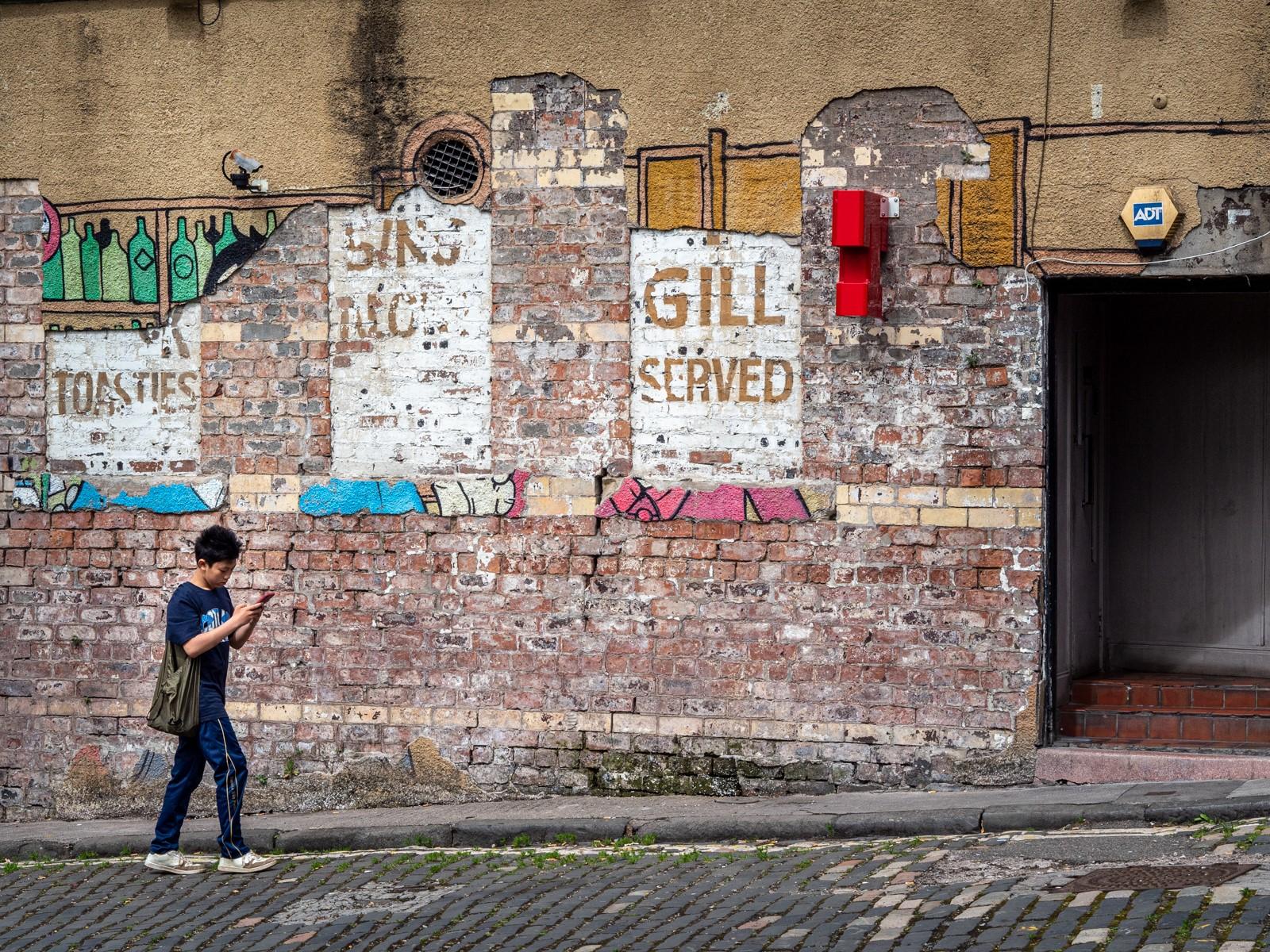
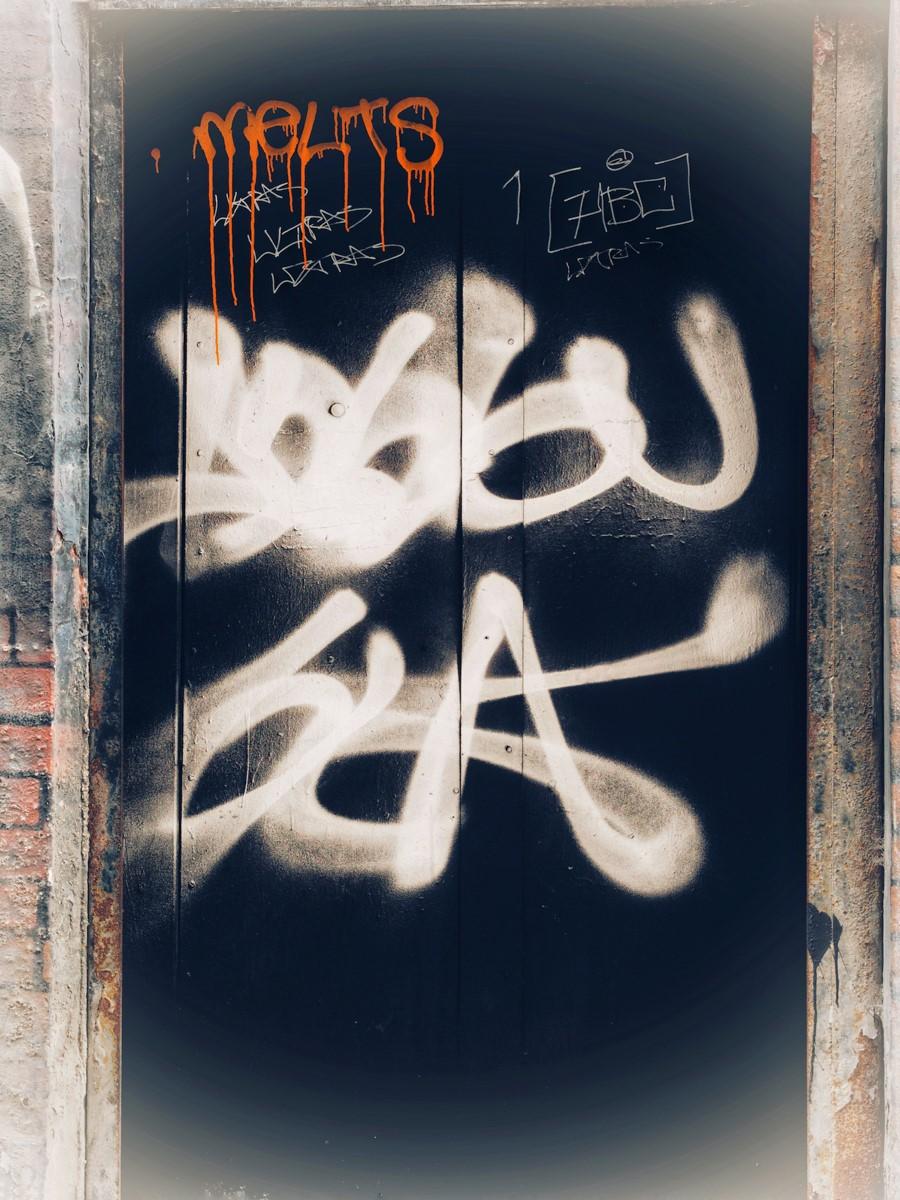
Over the last few years my interest in working with `projects’ has increased and yet one of the issues that arises when we visit new places is that successful projects involve more than one visit to a place and often need quite a bit of research alongside. Something that simply can’t happen with one-off visits. So what for me were the highlights of the five days? I’ve chosen to group them into the following categories:
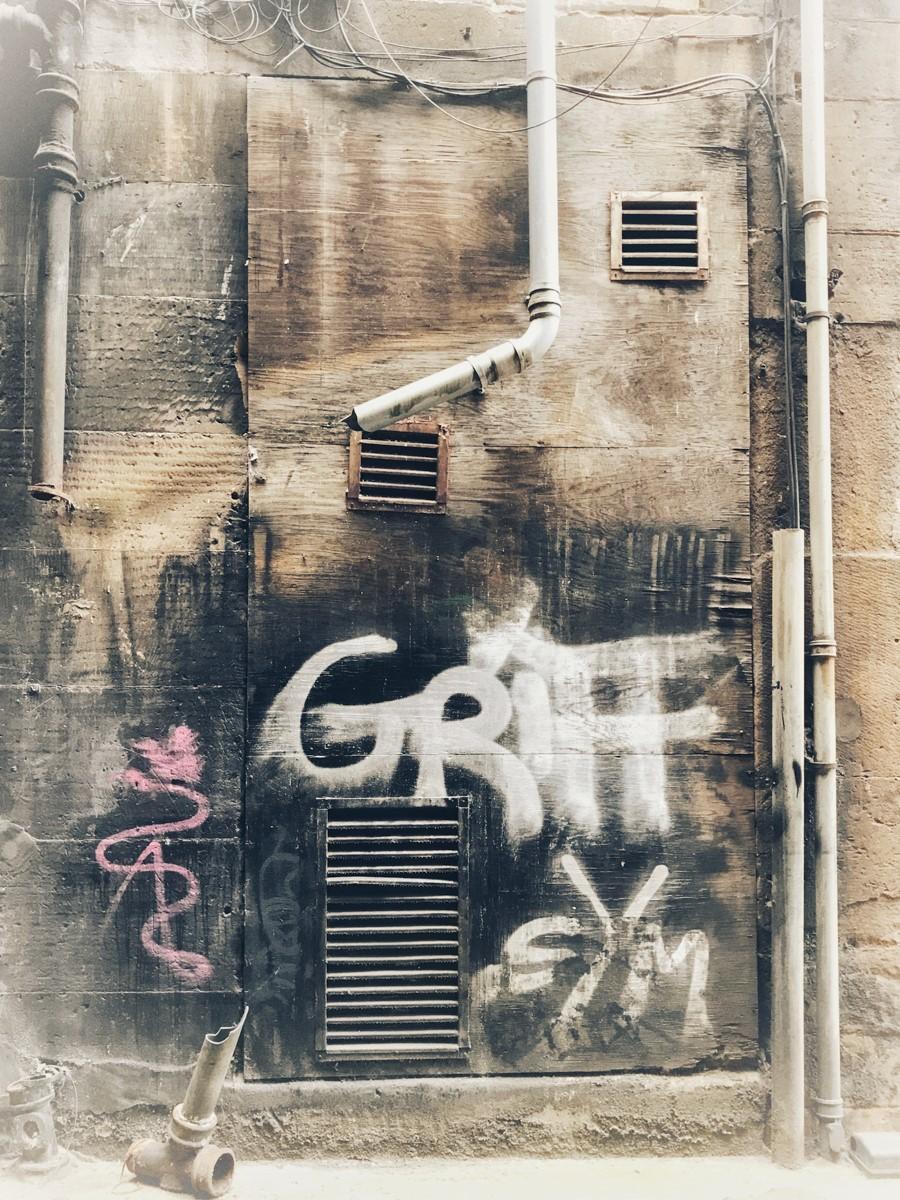 The writing’s on the wall’, people, design and pattern’
Graffiti scrawled on walls near to Central Station, writing on the wall and a young person engrossed in mobile technology
The writing’s on the wall’, people, design and pattern’
Graffiti scrawled on walls near to Central Station, writing on the wall and a young person engrossed in mobile technology

which was fun and colourful and a pleasure to be part of, contrasted with the Orange Order March which felt very militaristic and lacking in any joy.
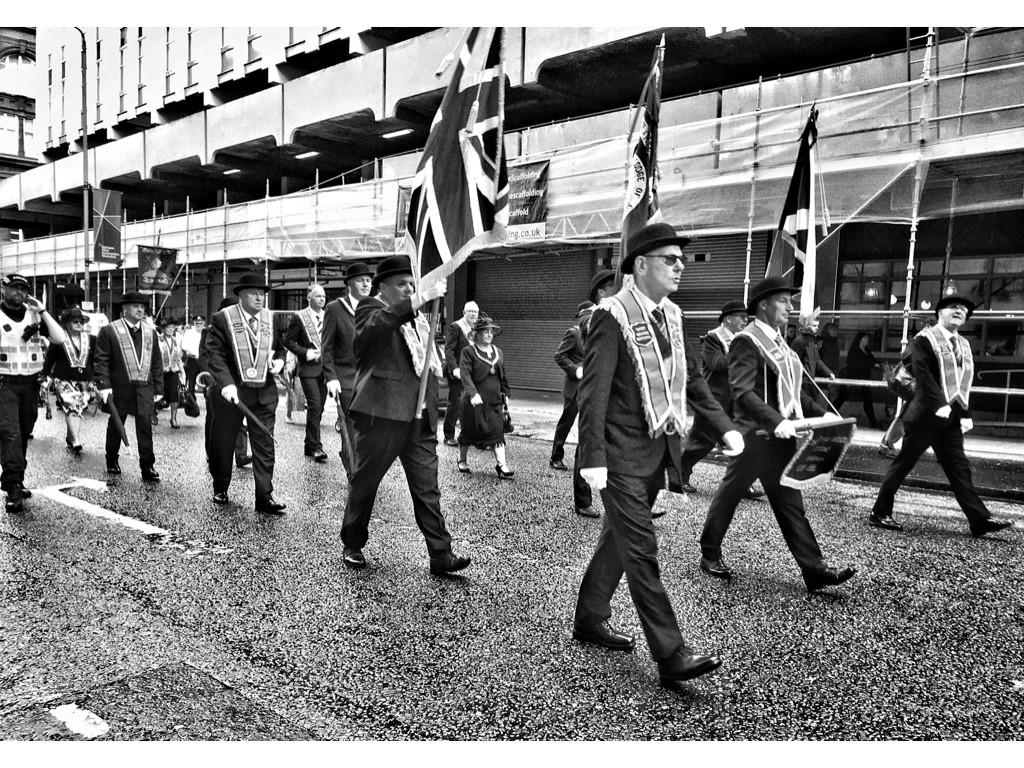
which showcases the work of Charles Rennie Mackintosh. The images on the right were taken using my camera and include some of my favourite Mackintosh designs. The panel was then put together using an app called In-Collage. The six panel on the left is a set I photographed using my iPhone7 with an app called PhotoSplit.
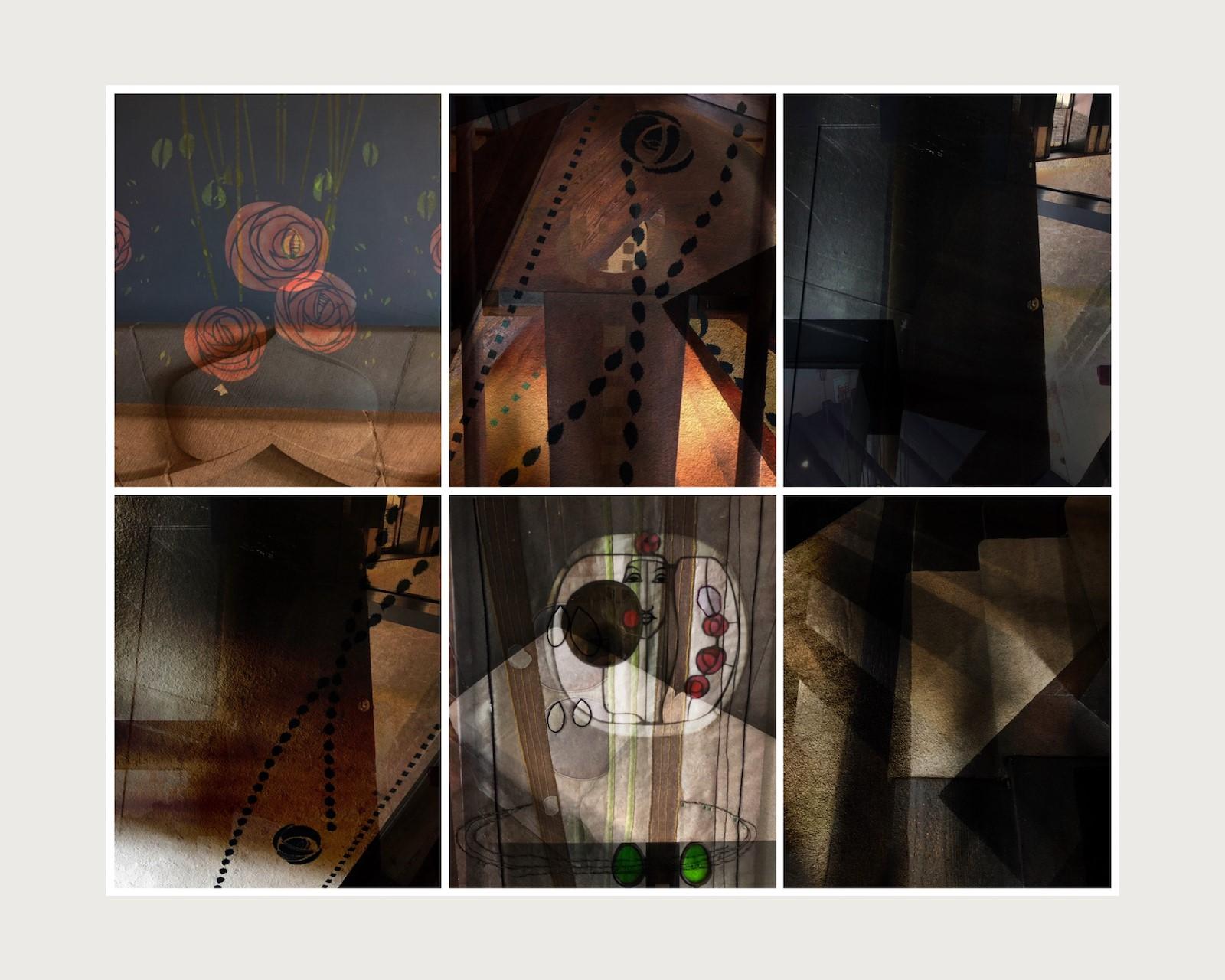
I find this a really fun app to use and it works with my older phone. I love the abstract shapes I’ve captured here and the way they work as a panel.
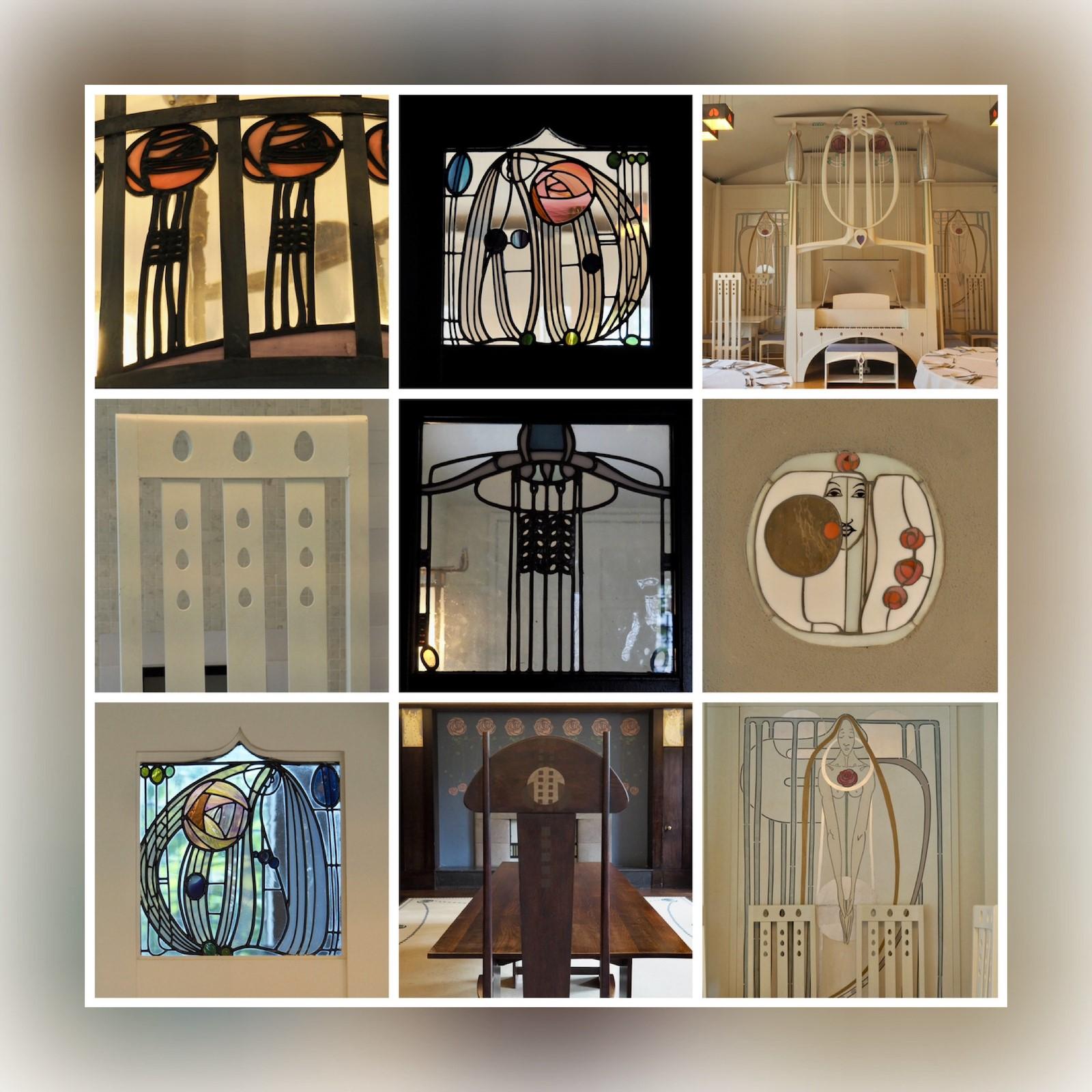
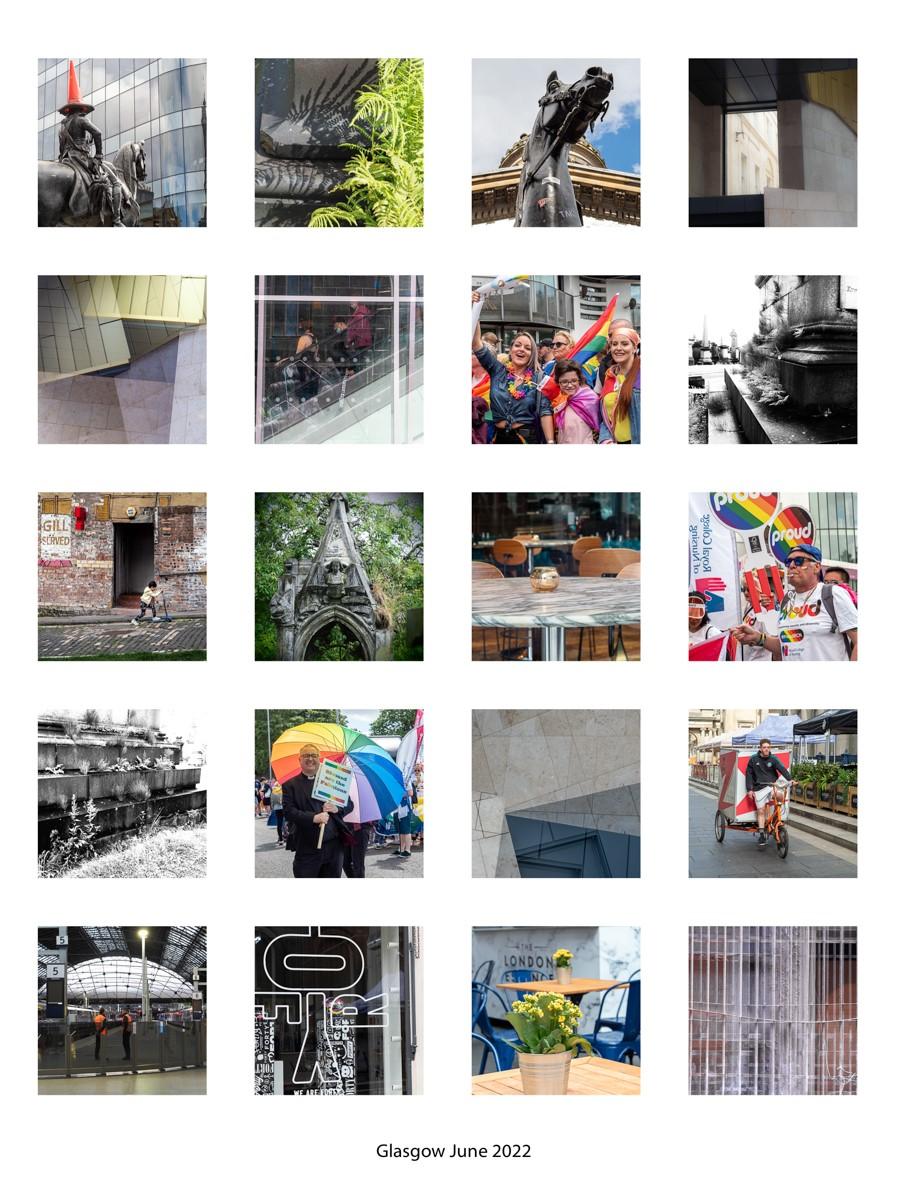
The final location where I had fun with my phone was in the Queen Street station on our last afternoon. Once again I was attracted to the patterns and shot my images using a mix of camera and iPhone. I used these images to create a `Flag Book’ where the top line of images is also turned as you turn the bottom pages. It hasn’t yet got a cover, nor a story, but a comment at the meeting regarding the number of red crosses and closure of platforms has got me thinking. As we were there at the time of a rail strike I would like to weave a social documentary strand into the story which I’ll place on the inside/ back covers. It might simply be newspaper headlines from June or maybe be more, but I’m working on it. So my thanks to that person - it’s always worth sharing.
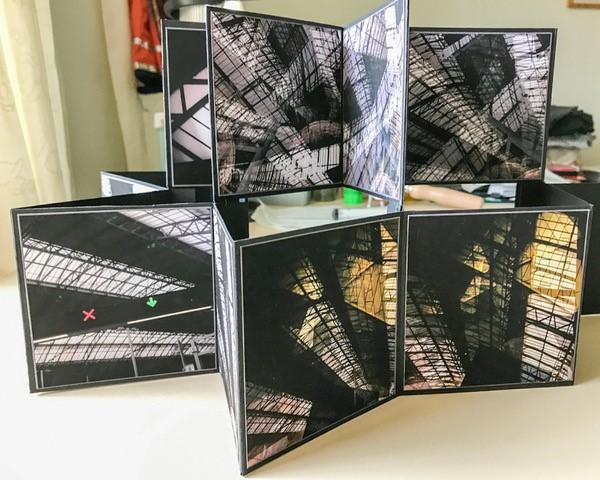 Queen Street Station
Queen Street Station
I saw Glasgow as a great place for street photography, which included the gay fest parade as well as the street art. Also the wide variety of subject matter in the Barra Market and the cemetery. It was a splendid five days of photography!
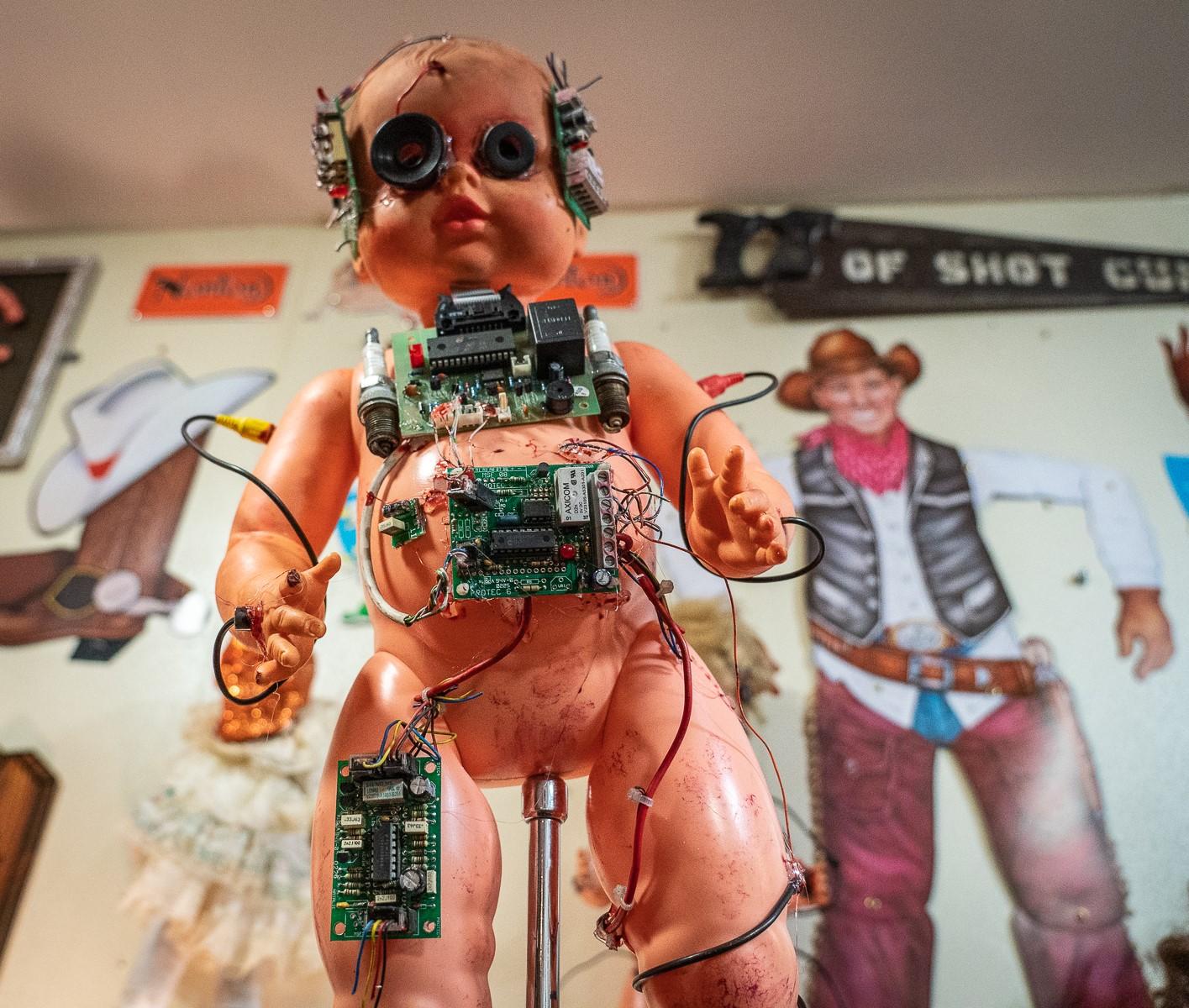
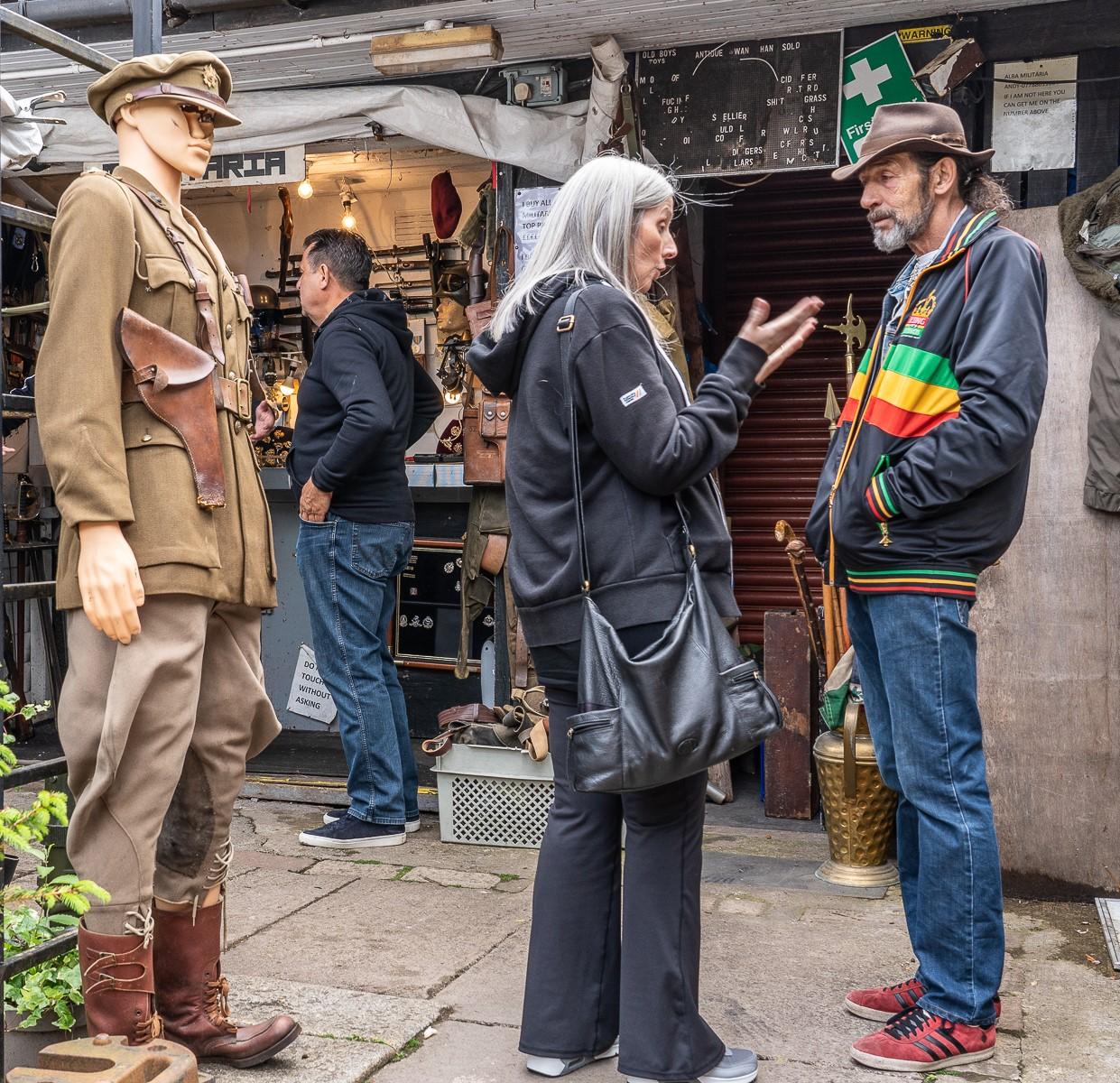 The famous Barrass (pronounced Barra) Market
The famous Barrass (pronounced Barra) Market

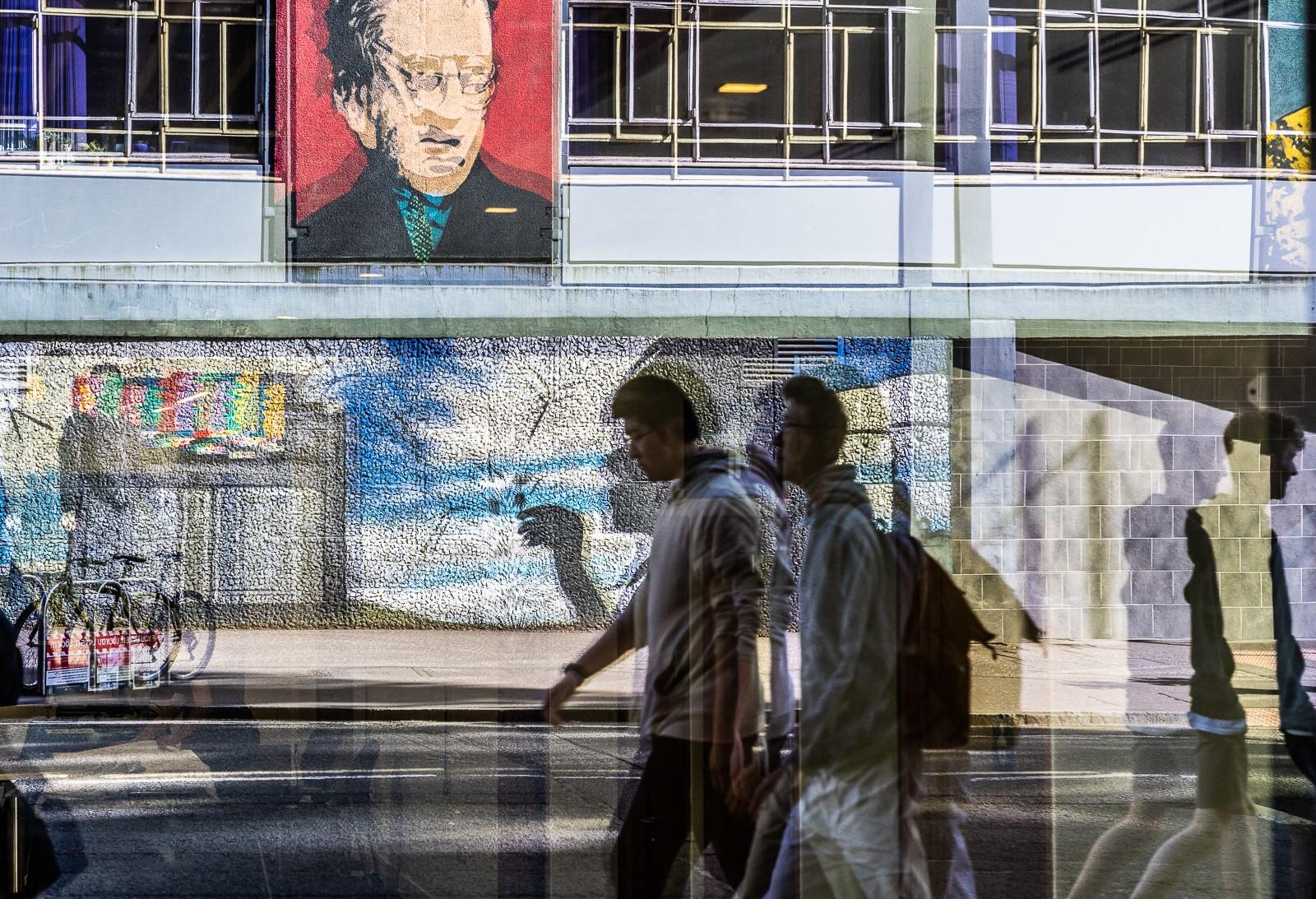
Jim Souper discussed his discovery of a mindful approach to photography, largely through a series of workshops with Paul Sanders (www.discoverstill.com). He explained how he had learnt to be more present in the moment, to slow down, to pay more attention and to be more patient. Consequently, he was now making images for himself rather than worrying about the judgement of others and had regained his passion for photography.
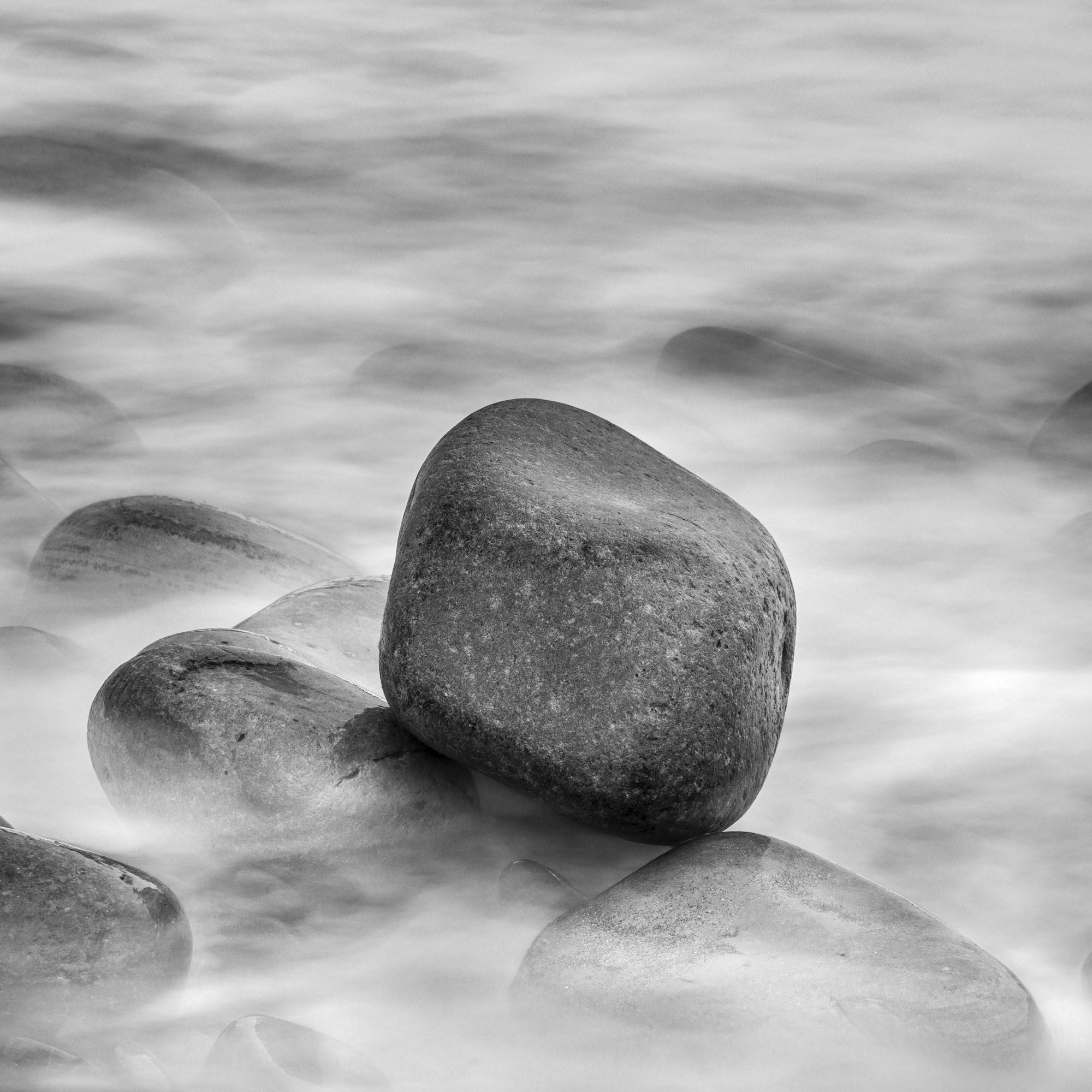
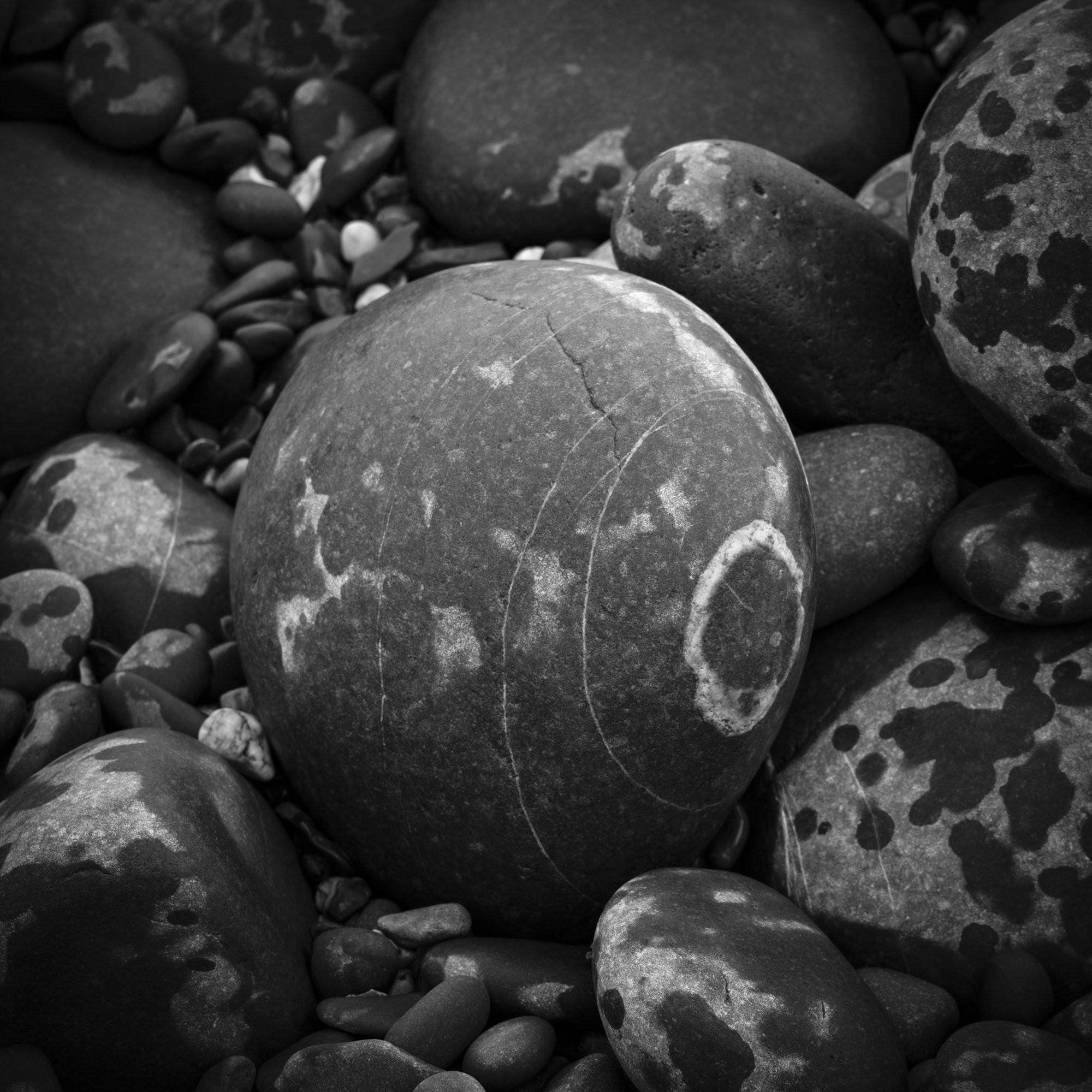
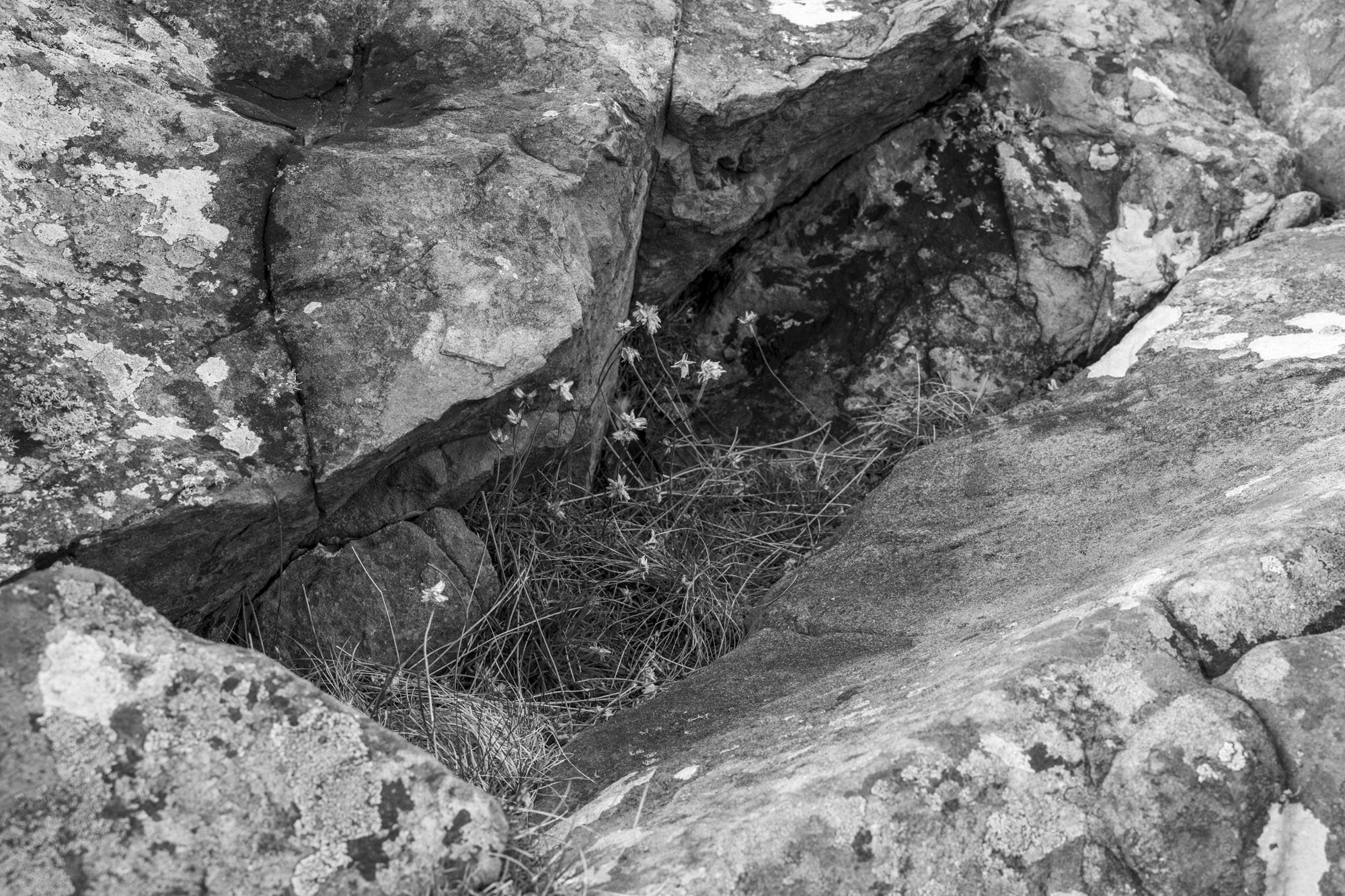
In addition to Paul Sanders' website, Jim recommends two books he has found useful: 'Mindfulness – 25 Ways to Live in the Moment Through Art' by Christophe Andre
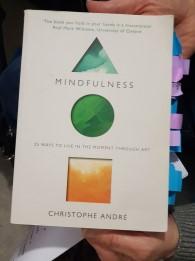
'The Mindful Photographer' by Sophie Haworth
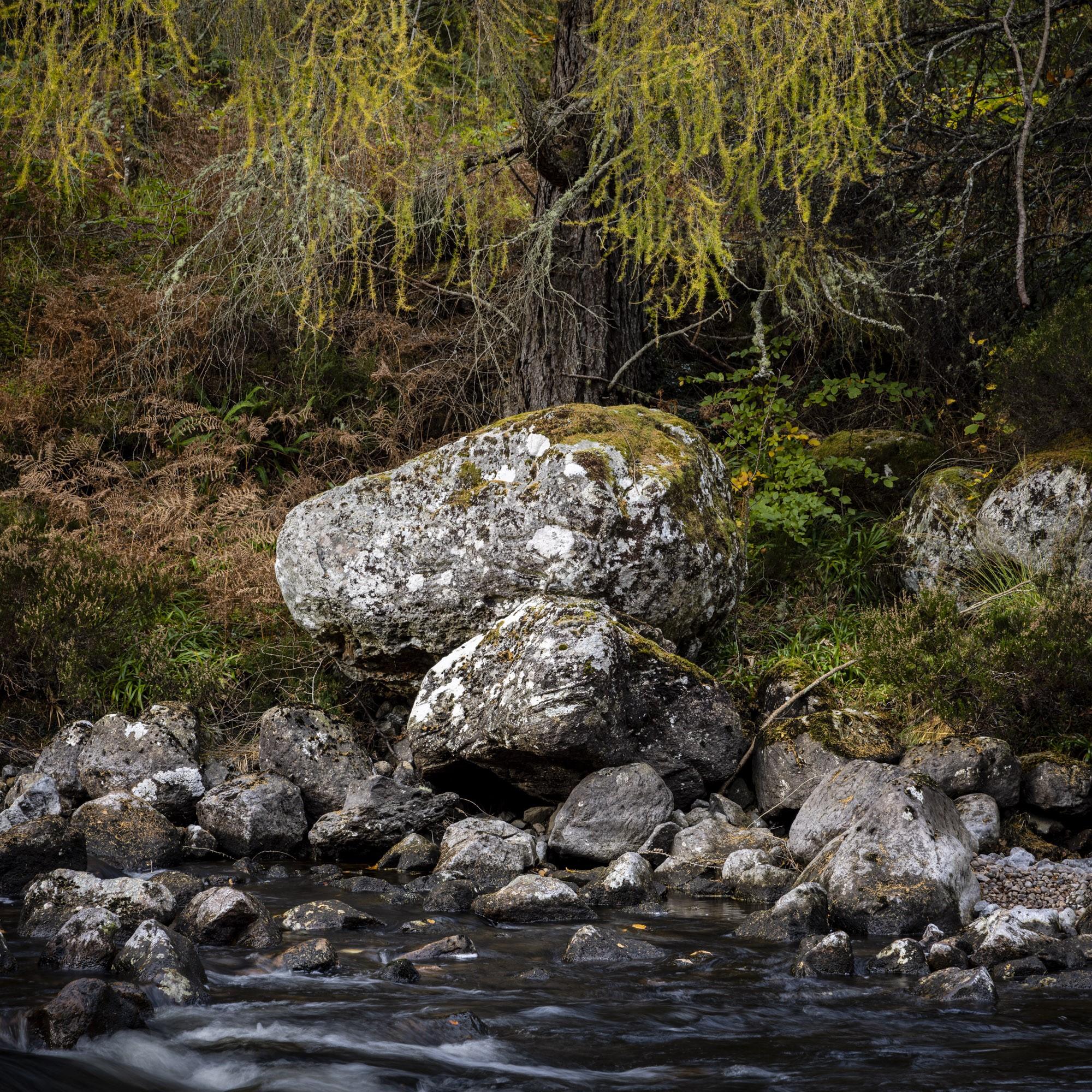
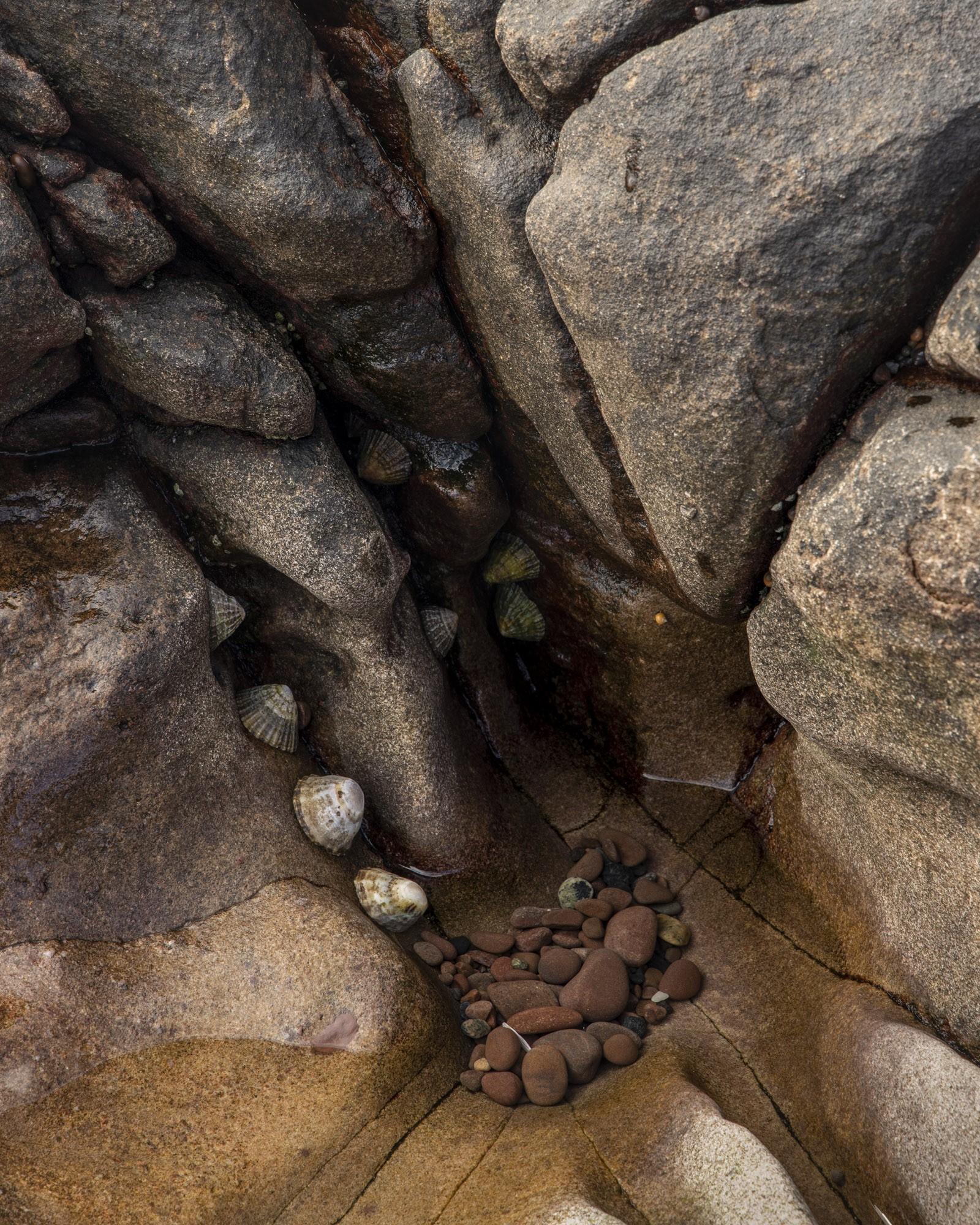
Standing in the cold, the dark and the wet, and with too much expensive gear.
This article briefly discusses an approach to abstract street photography using water (rain, condensation) as a means of abstraction. You all have a good idea of what is meant by street photography and by abstract photography. So, I’m not going to talk about these in detail.
I first stumbled across this idea when I took the next photo, early one Sunday morning.
The approach outlined here uses water droplets, primarily on windows, to achieve abstraction. So we need to consider reliable methods of getting water onto windows between the subject and our camera, and to have a well-lit subject, relative to the camera.
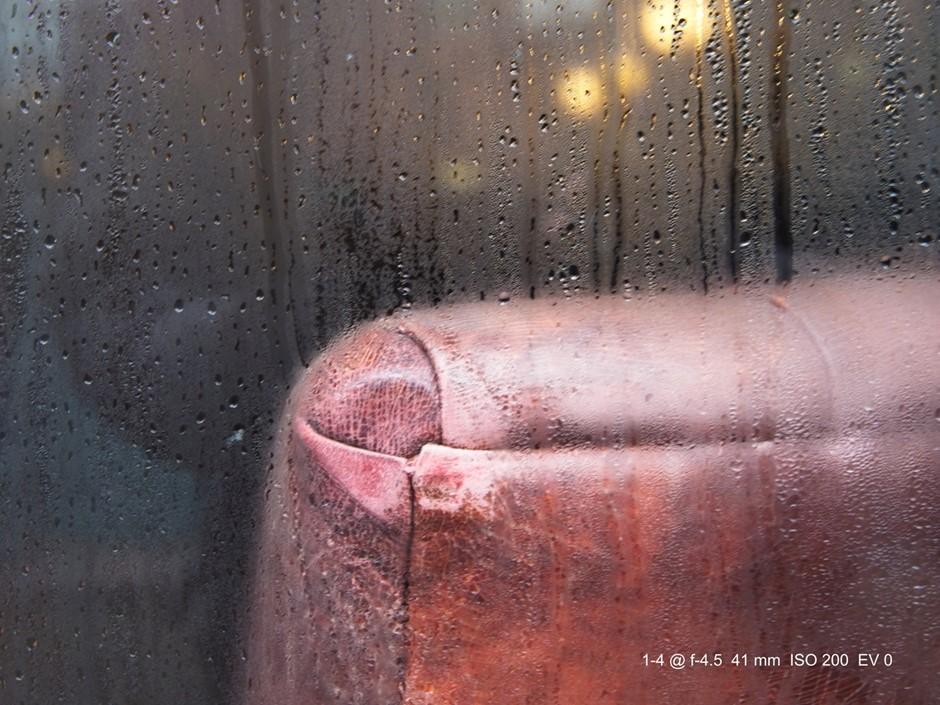
The method used is to go out hunting for photographs in the following conditions:
Dark: to achieve a subject brighter than the camera
Cold: to allow condensation to form on the inside of the windows
Poor air conditioning: for more condensation
People out having fun: which encourages even more condensation
Raining: so that water collects on the outside of the windows
Good venues tend to be places where many people congregate such as pubs and restaurants. A good amount of condensation also relies, to a certain extent, upon the venue having poor air conditioning. However, always be on the lookout. I’ve also had good results from private dwellings (especially kitchens) and commercial premises. Walk around and keep your eyes open.
We now have our criteria for when to go out hunting for photos. How do we protect ourselves and our equipment from the consequences of spending a few hours wandering around in the cold, dark and rain? Here’s some advice which I’ve found useful.
Protect yourself. You probably won’t be interested in taking good photographs if you’re feeling miserable.
Wrap up against the cold.
Wear waterproof shoes, trousers, coat and hat.
Be wary of gloves as they typically make operating your camera difficult.
Wear comfortable shoes. I wear waterproof hiking boots.
A cycle cape can be useful because you can keep your camera under it when not in use.
Don’t be afraid to look really strange. Passing people might think that you look strange but they will have forgotten about you within 5 seconds of their passing whereas you want to stay comfortable for some time.
Protect your equipment. Having made sure that you’re comfortable now think about your equipment. There’s no point having expensive camera equipment if you don’t use it because you’re worried about it getting wet. However, you should take some reasonable precautions.
Check your battery charge hours (so you have time to charge) before you go out. Cold reduces battery capacity, often very severely.
Maybe keep a spare battery in the warm in an inside pocket.
Select your lens before you go out. Do not change lenses in the rain.
Carry a microfibre cloth to wipe the rain off your equipment.
Use a weather sealed body and camera if you can. A shower cap can also be helpful for keeping the camera dry.
Use a fast lens and high ISO in preference to a tripod. Tripods are a pain to set up in the dark and wet, and to carry around when you’re encumbered by rain-proof clothing. Also, they’re only useful if you’re working on a scene with no movement. If someone trips over your tripod in the dark the consequences could be unpleasant, especially if they are injured.
Set up your camera before you go out: ISO, aspect ratio, colour/mono, film emulation, image stabilization, etc. Fiddling with these settings from a screen that’s being rained on, with cold fingers, is no fun especially when your camera sees water on the screen as interface gestures.
Use a lens hood if you have one – they help keep the rain off the lens.
I like to take photographs that exclude people as well as those that include people. When excluding people the subject is often static leaving chance for consideration and composition. When including people you need to be careful of being seen.
Selecting a bright subject (i.e. in a well-lit restaurant) whilst you’re outside (in the dark) is a good strategy, but you need to be aware of the pool of light that forms around windows.
Robert Capa once said:
“
If your pictures aren't good enough, you're not close enough.”
This axiom doesn’t work quite so well in this genre. If you’re too close you can be seen and the type of image shown next can result where I have been spotted and caused a reaction that I didn’t want. Also, the shutter speed is a bit slow resulting in motion blur.
Laugh, smile happily, give a cheery wave and walk away. Also, when involving people, you often need to be relatively fast composing and taking the photo. So be prepared to use a slightly wider lens than you need and to straighten and crop afterwards.
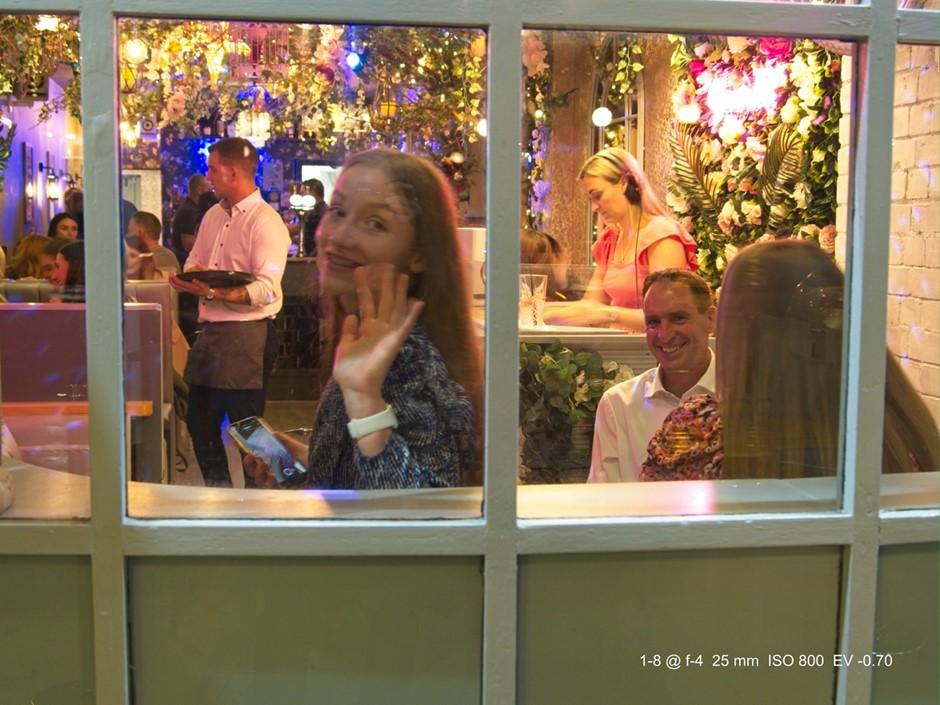
A consequence of using a high ISO setting is shot noise (I’m assuming a digital camera). So be prepared to use noise reduction software. You don’t always need it and you should consider the aesthetics of the image – some noise (just like film grain) can add interest to an image. Also, conversion to mono is a great way of hiding shot noise and changing the mood of the image.
Let’s look at some example images. These were all taken on the same dark, cold, rainy night in York.
This first image (above) shows the inside of a pub. It was taken midweek at around 8 pm. Although I like the combination of colours, the composition and the abstraction, I do wonder why someone is sitting on their own (apparently) drinking beer with a sleeping baby. The metadata (bottom RHS of the image) shows a shutter speed of one 80th of a second at f2.8 and ISO 6400. People in the image were relatively relaxed (i.e. no motion blur). There’s very little noise (if you blow the image up quite large you can see some).
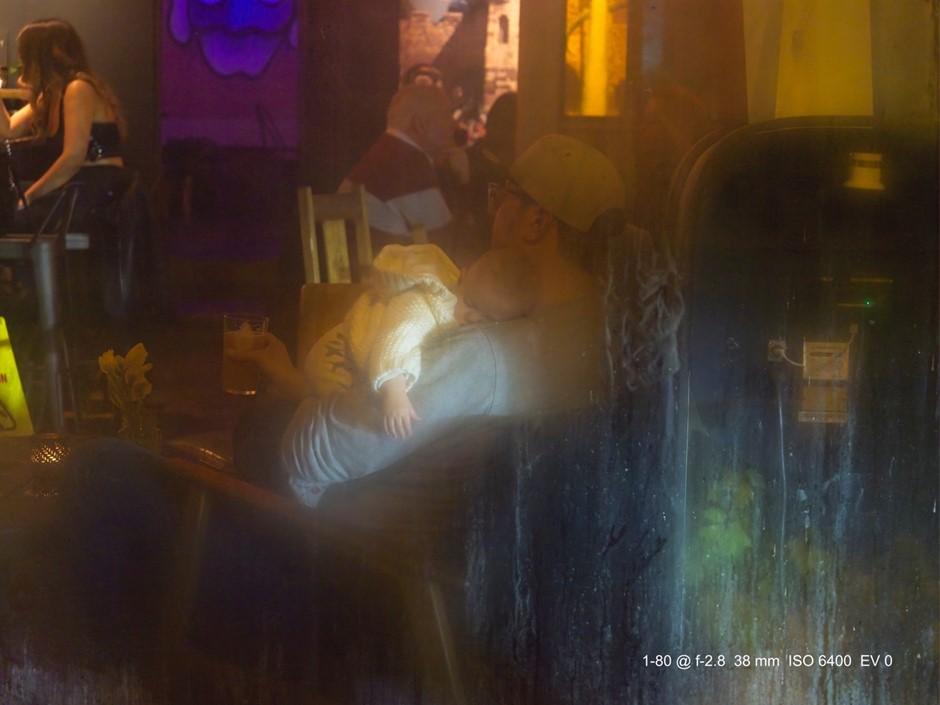
The next image shows a lamp shade.
Again it’s a view into a pub. I like the colours and the suggestions of things in the background: a table, some decorative lights, the outline of a figure in the lampshade. To me they are puzzles that draw me into the image making me look at it closely and think about it.
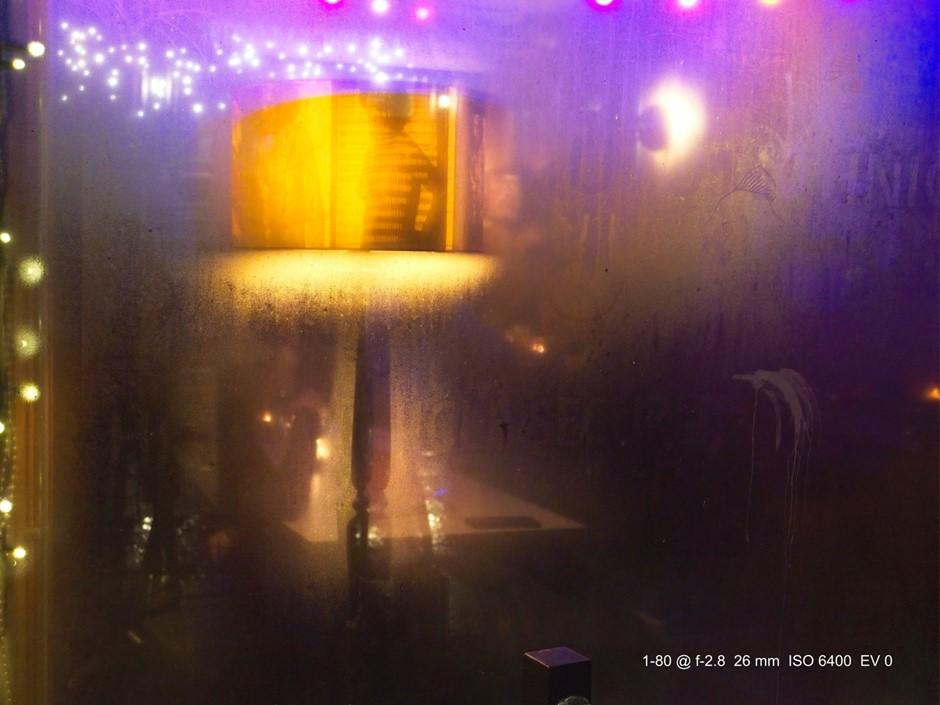
The final image is another view of a pub.
The blurred figure on the right is enigmatic: is he/she looking at the price list (deliberately left in focus and not cropped, and truncated making it ambiguous) wondering what to drink next? Are they on their own?
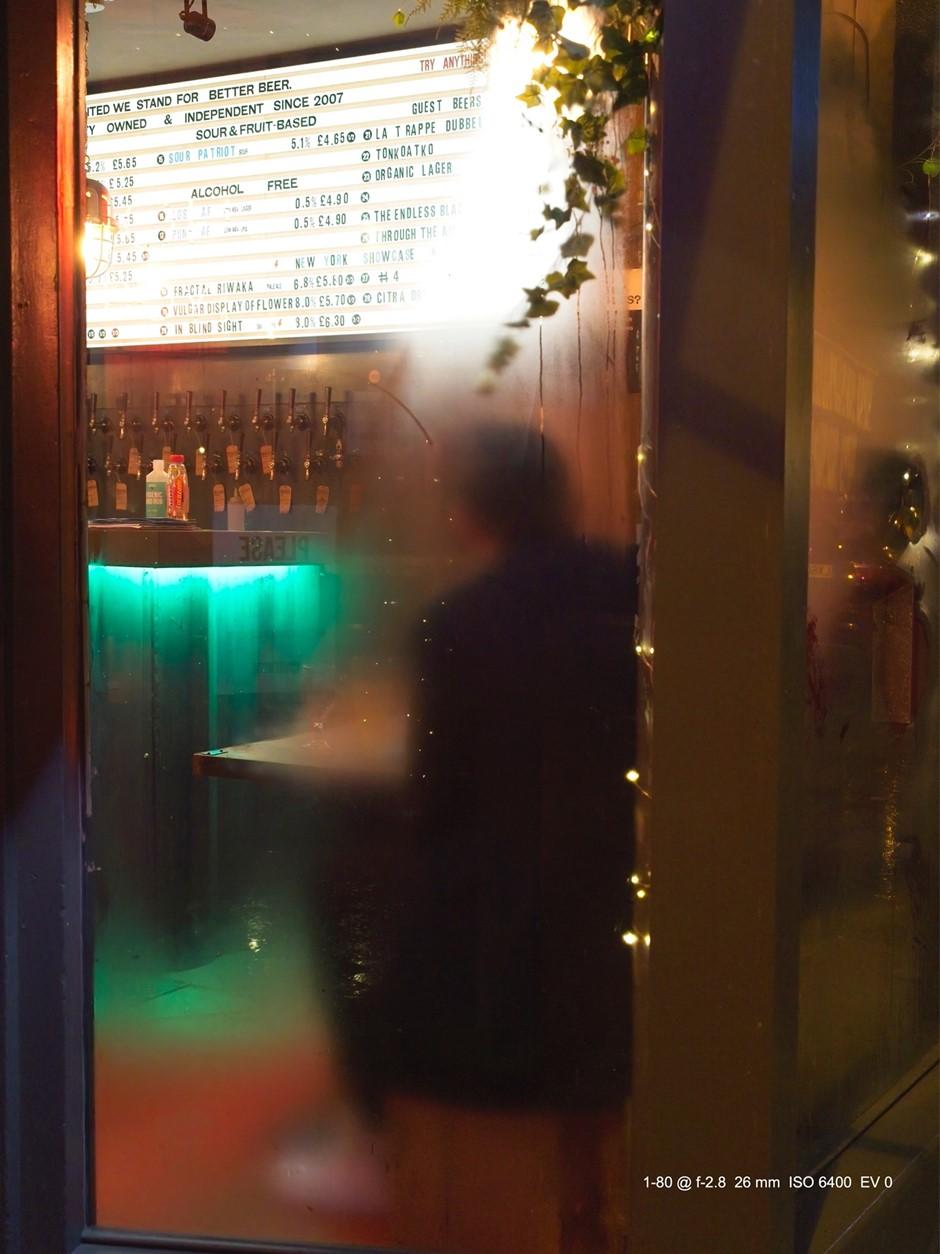
Conditions, such as I describe in this article, are actually fairly rare – despite the English habit of complaining about the weather. You really need to be out and about in the Autumn or Winter for it to be dark enough and to have a good chance of rain and cold. So keep an eye on the weather forecast.
You don’t have to have all of these weather conditions. Restaurants with good air conditioning and an awning tend to reflect the activity inside rather than abstracting it. Interesting images can also be gained from relaxing the “cold, dark and wet” constraints.
You can find more of my images on Instagram under @drgarymorgan.
Andrew Hersom spoke about his photographs, which were mostly of people. He showed a few images, all taken at the showground at Driffield, East Yorkshire, which is a good photographic location for people pictures. He found the main problem was getting a neutral background.
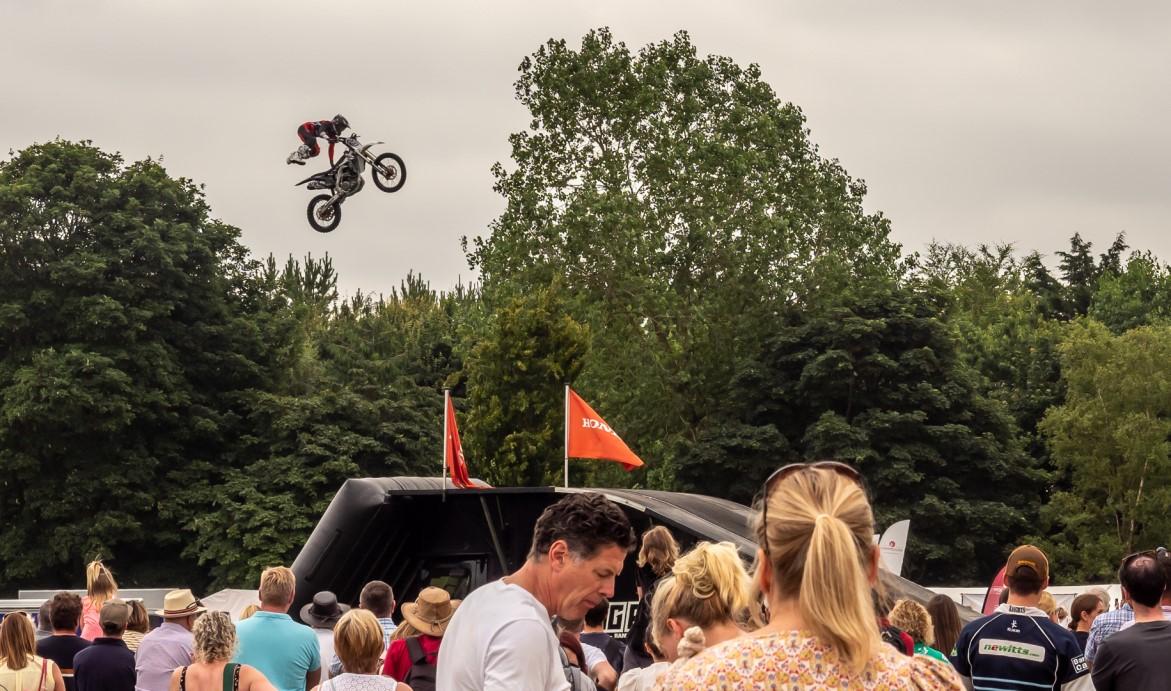
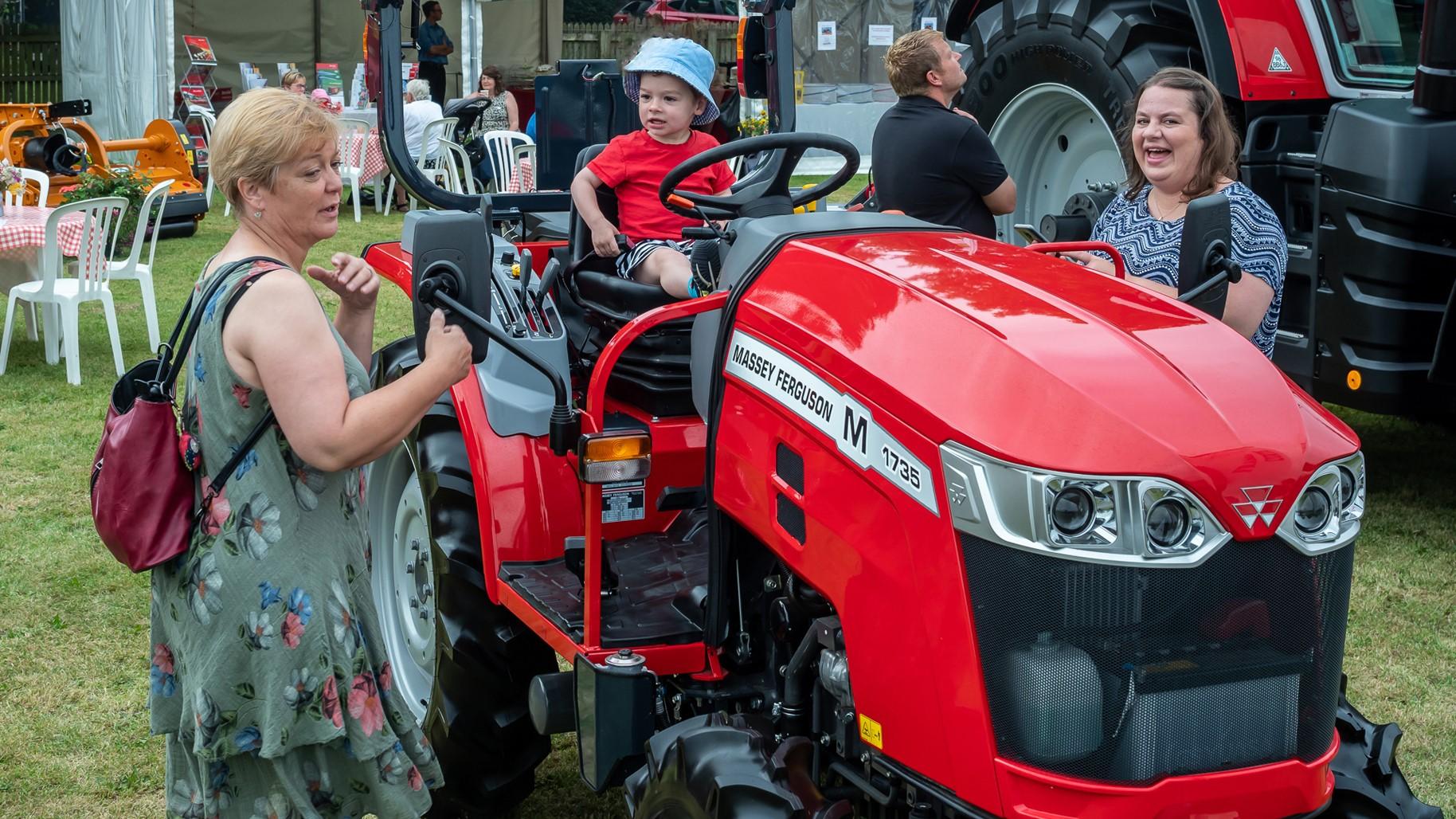
Time to Oil
 Fun of the Fair
Fun of the Fair
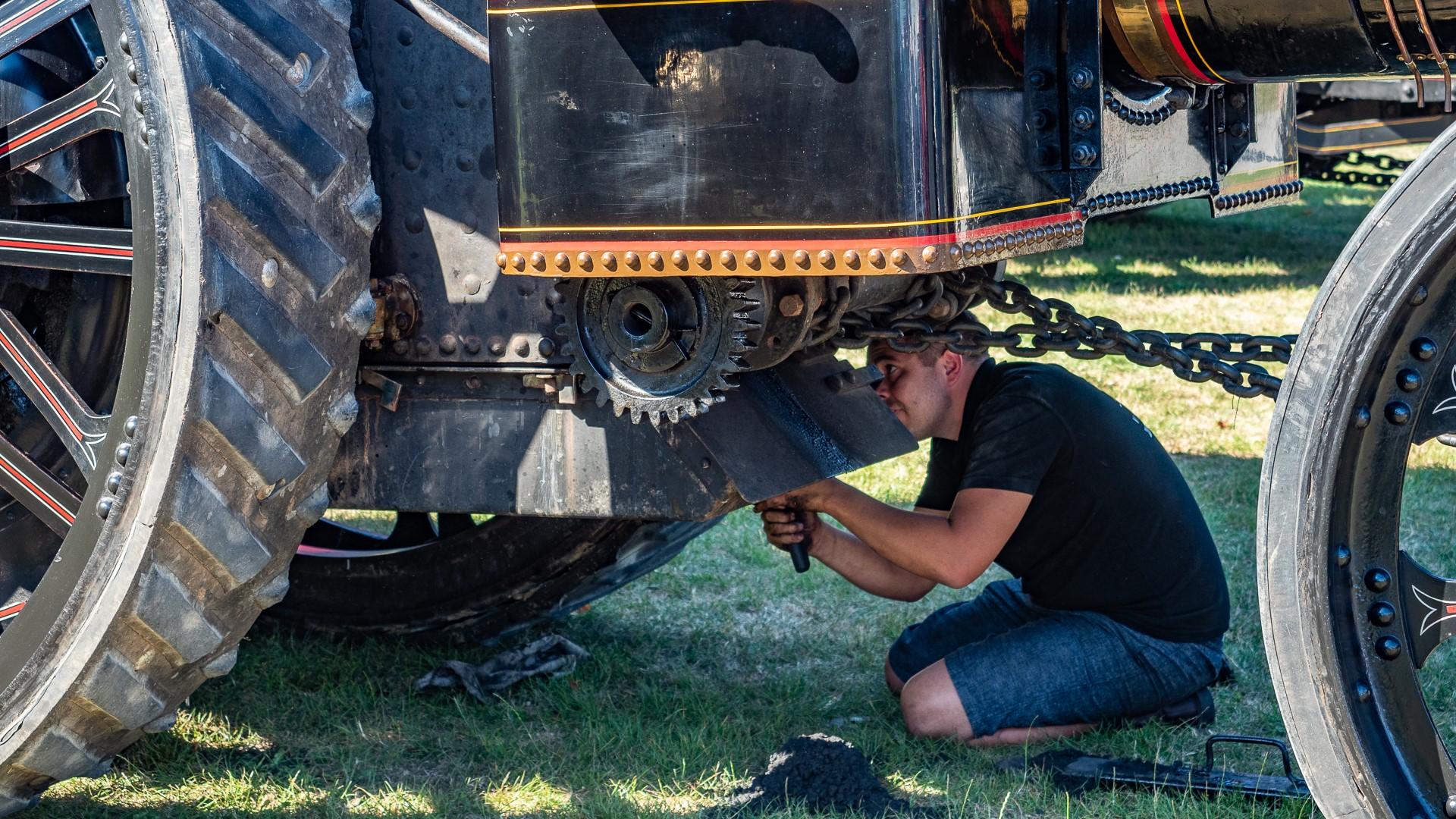

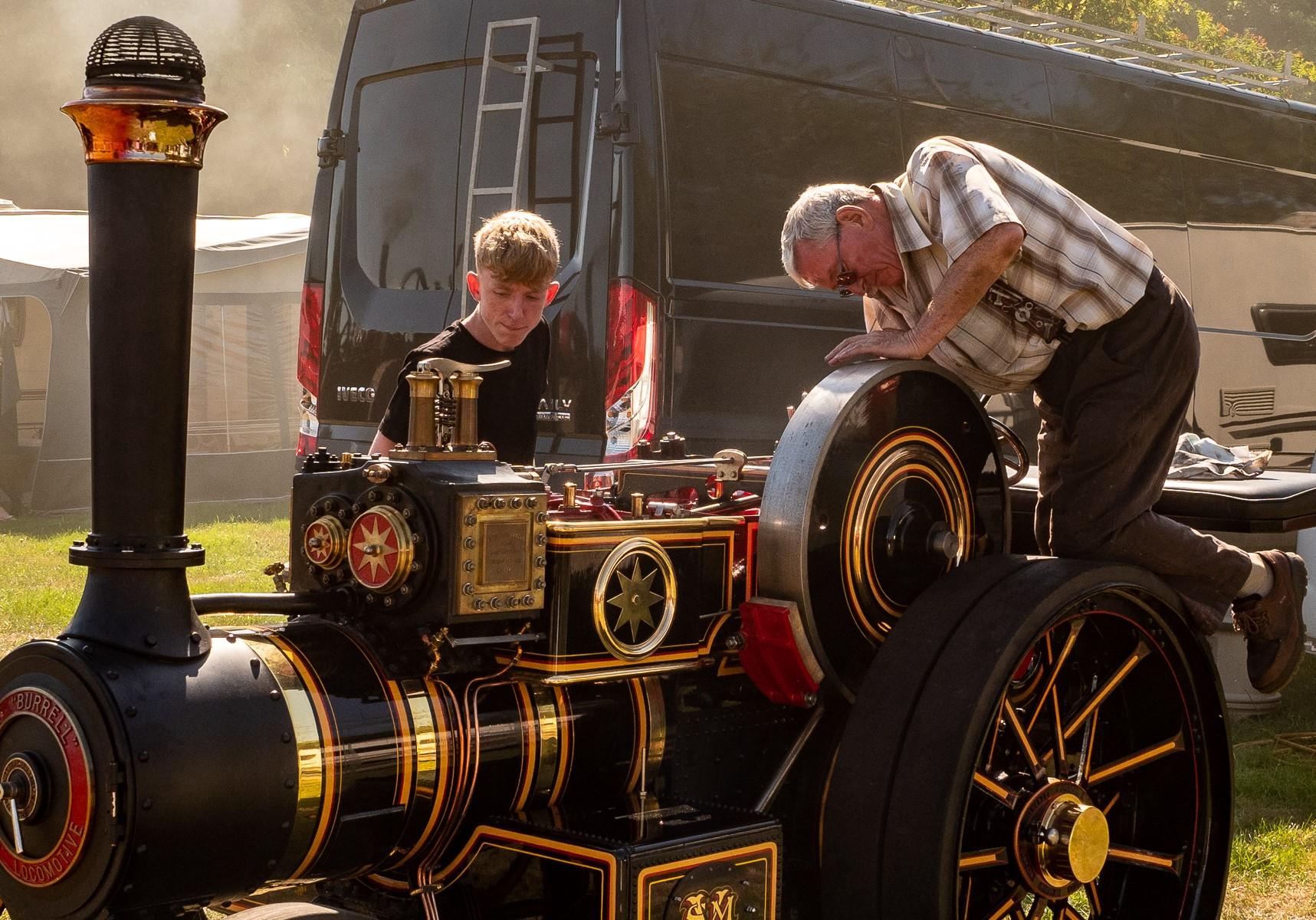 Engineering Attention
Steam Fans
Traction Service
Engineering Attention
Steam Fans
Traction Service
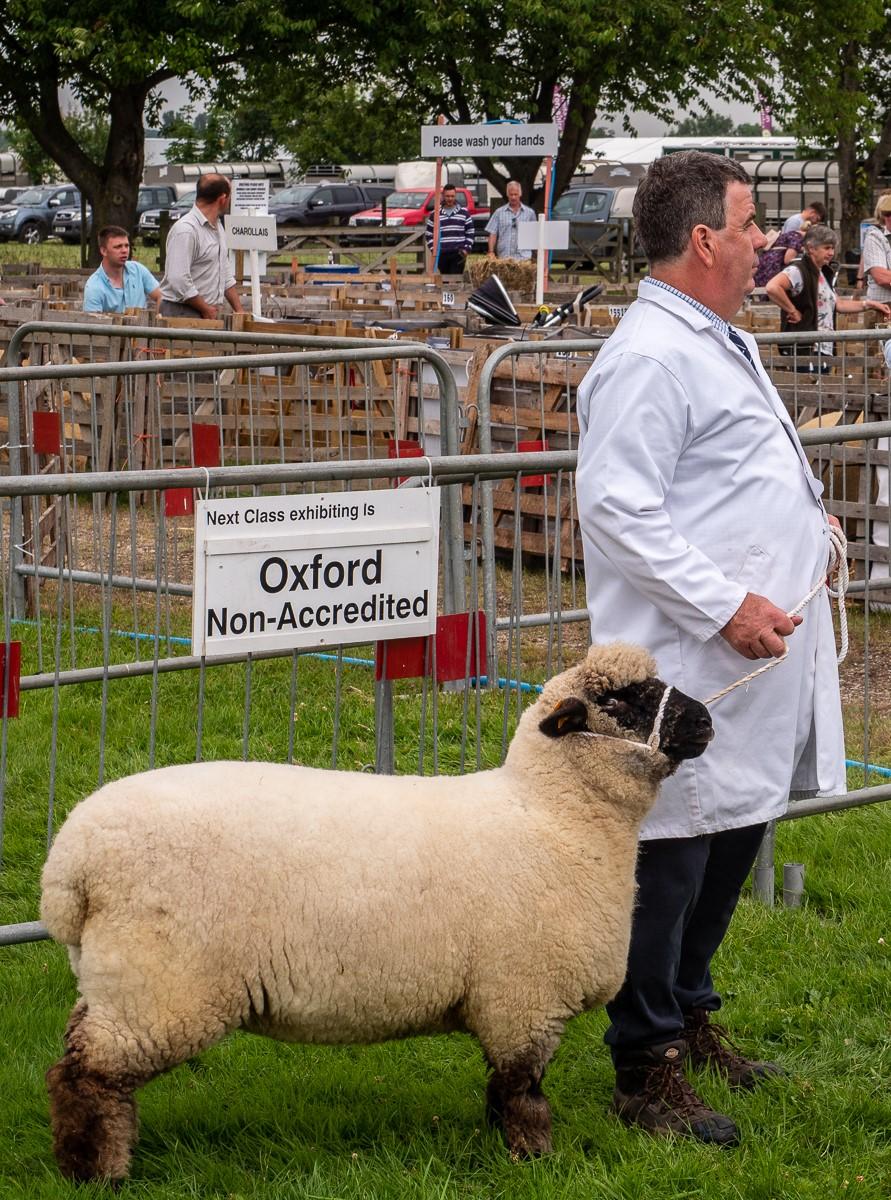
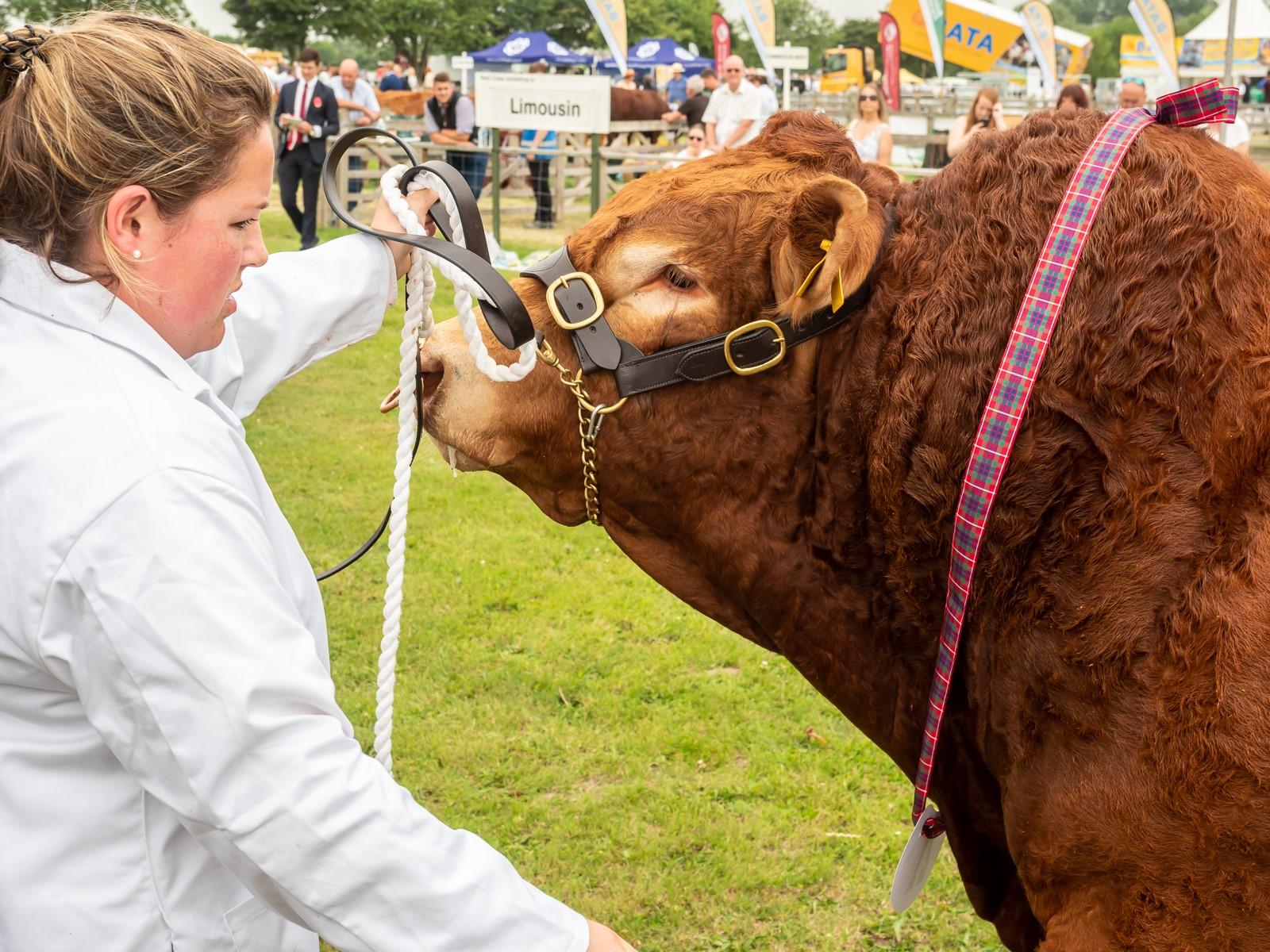
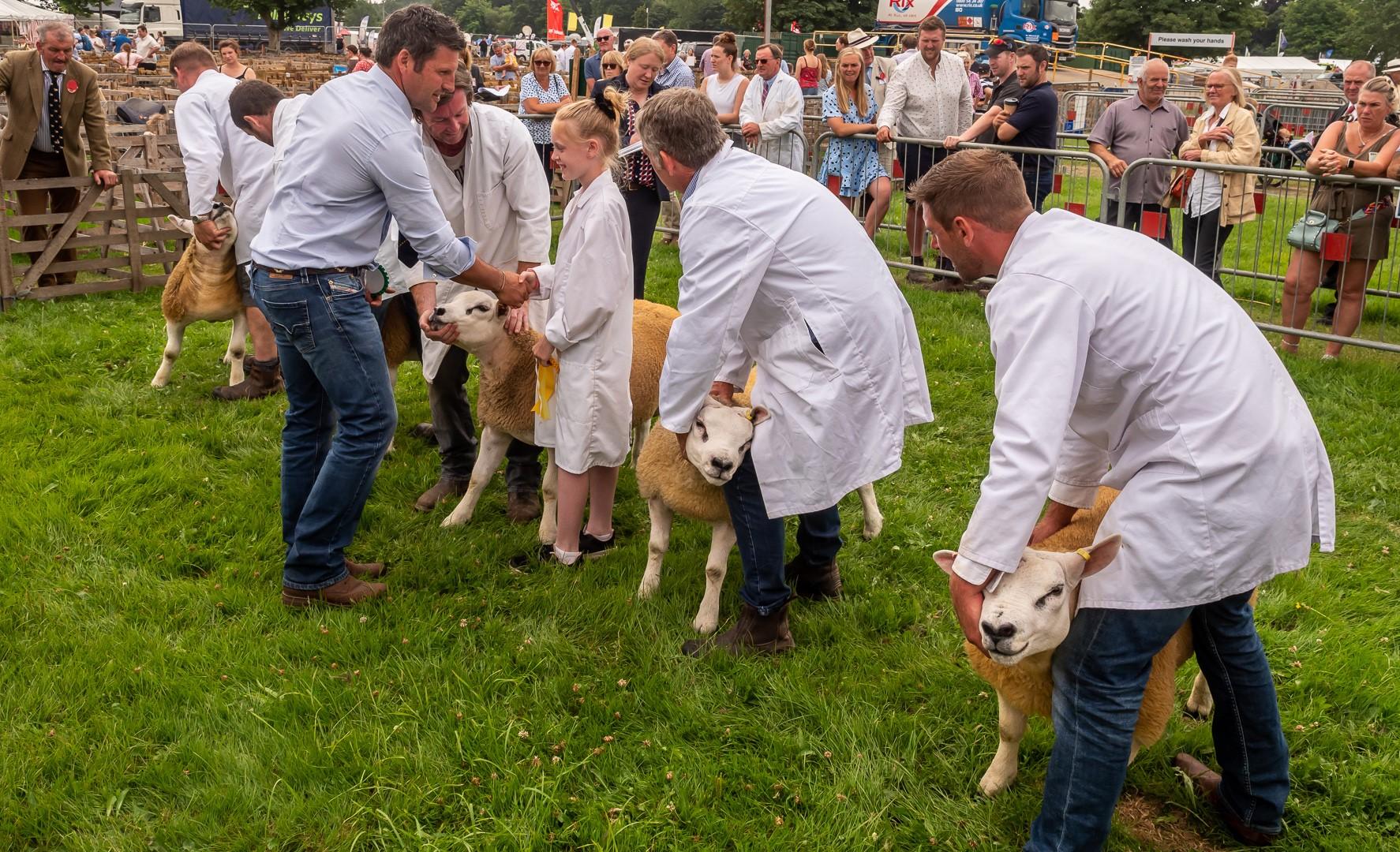 Oxford—non Accredited
Tartan Scarf
The girl’s a winner
Oxford—non Accredited
Tartan Scarf
The girl’s a winner
